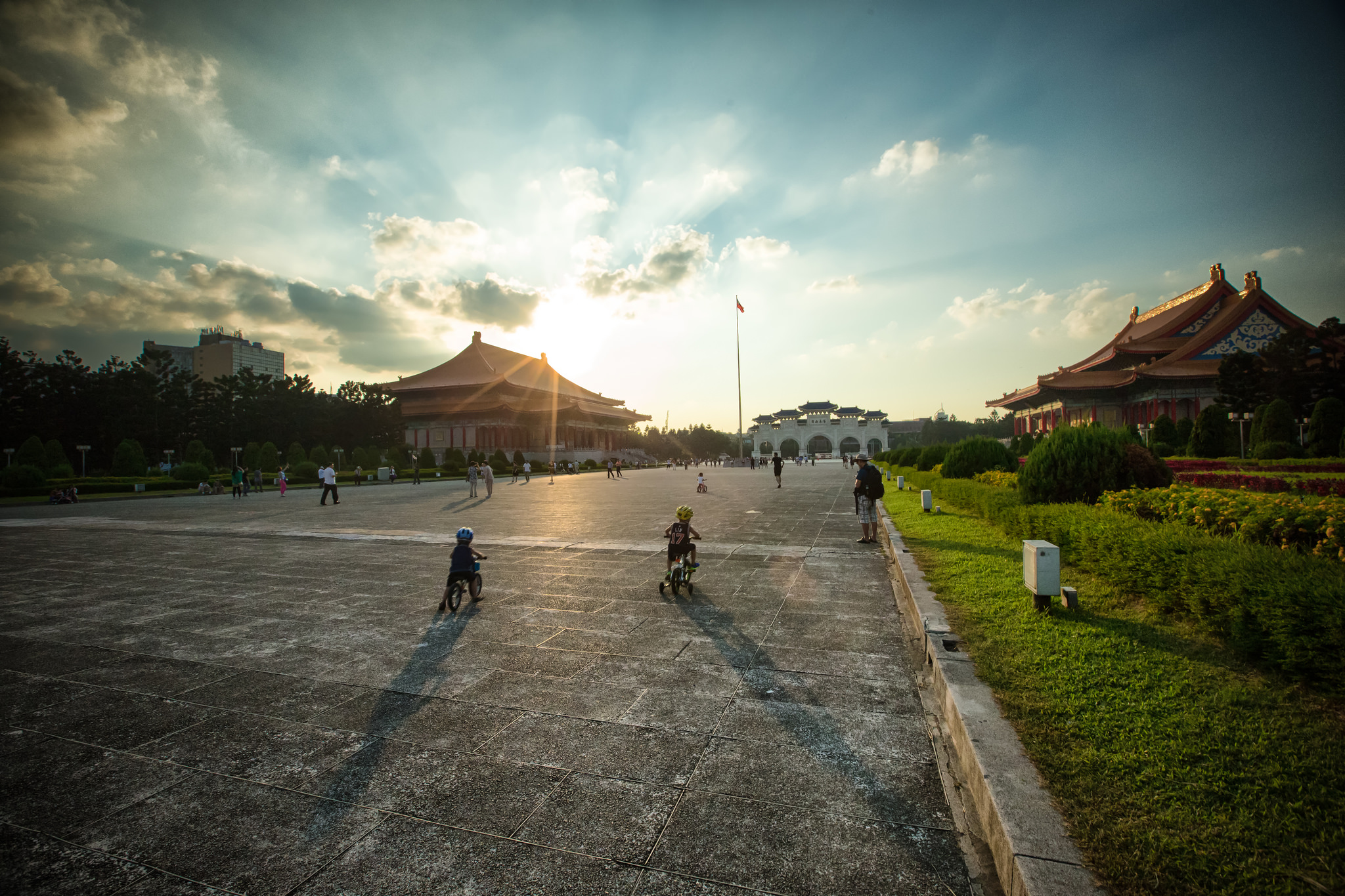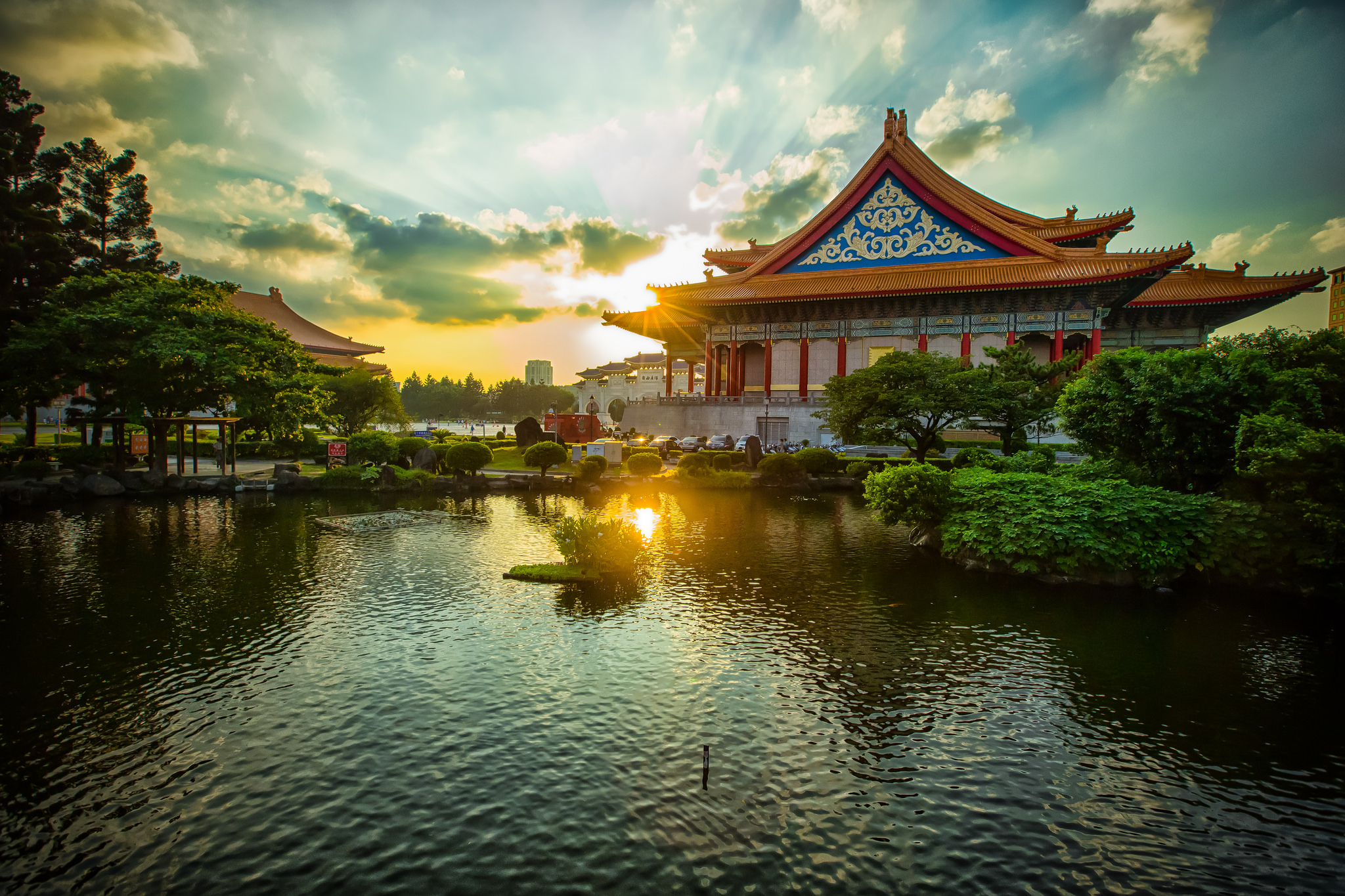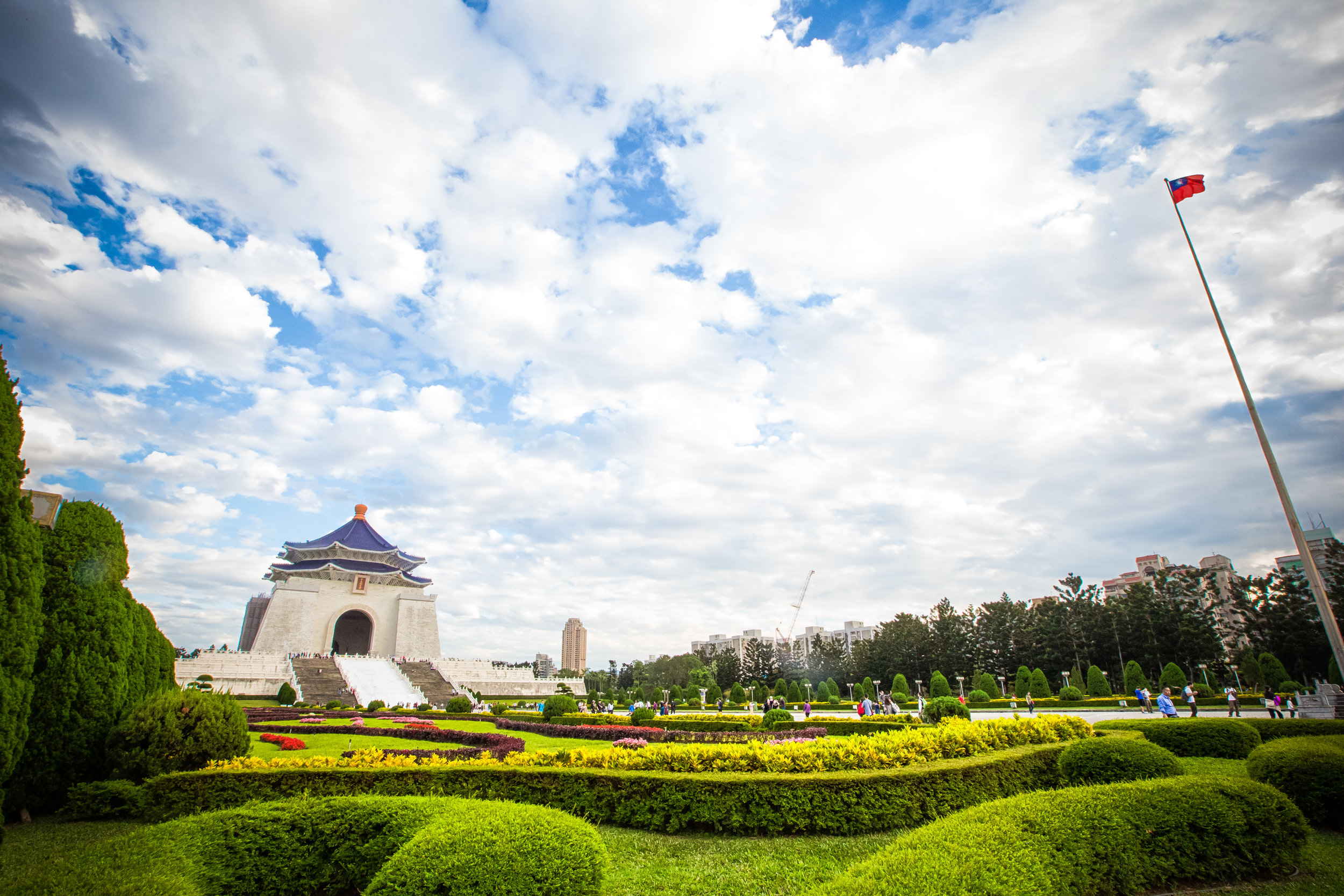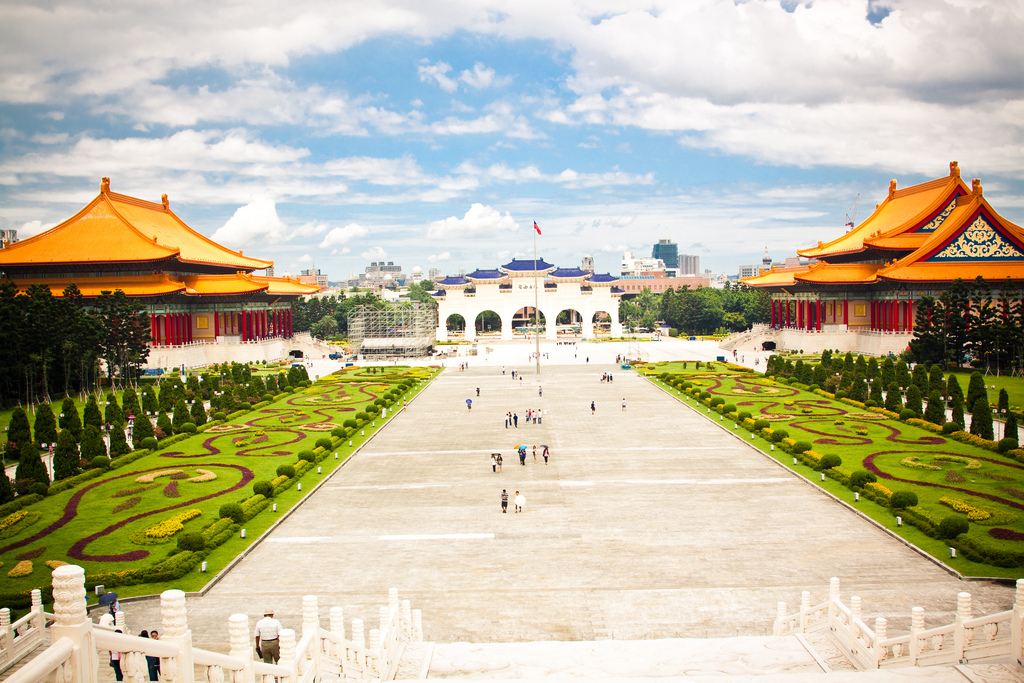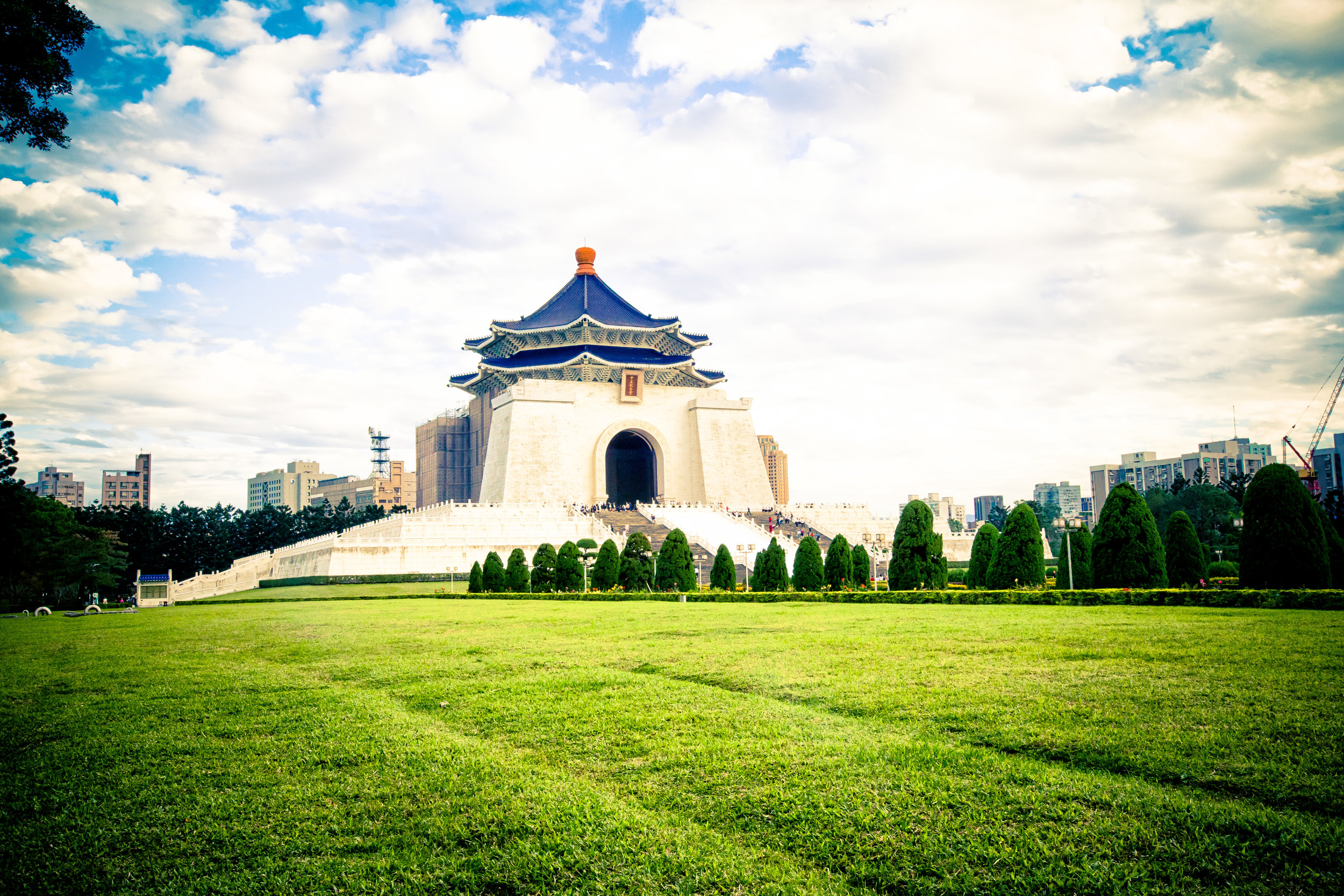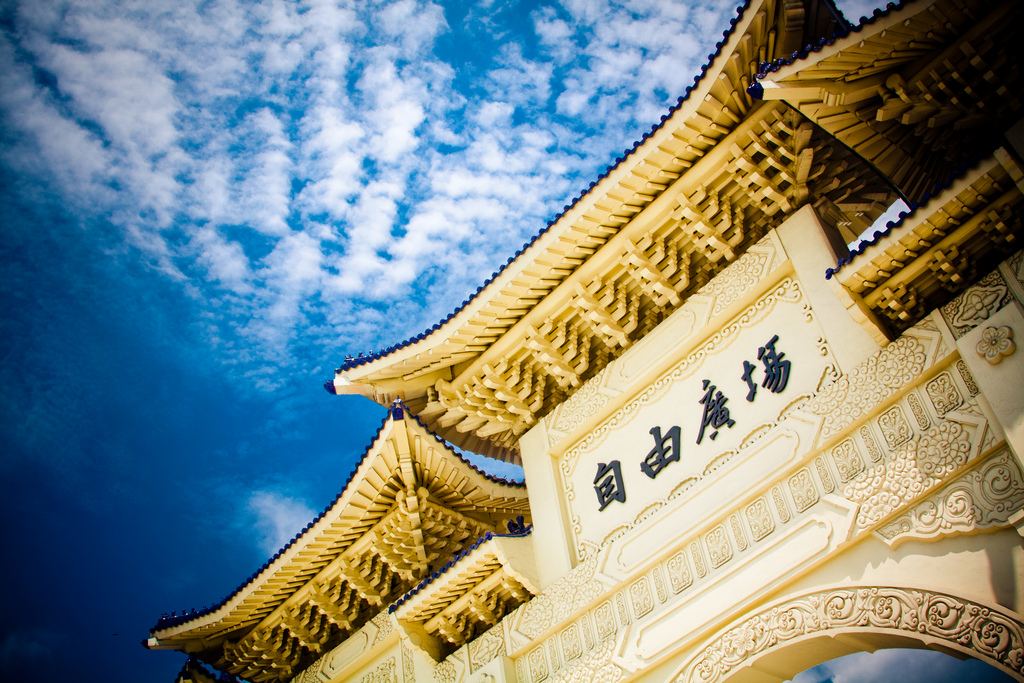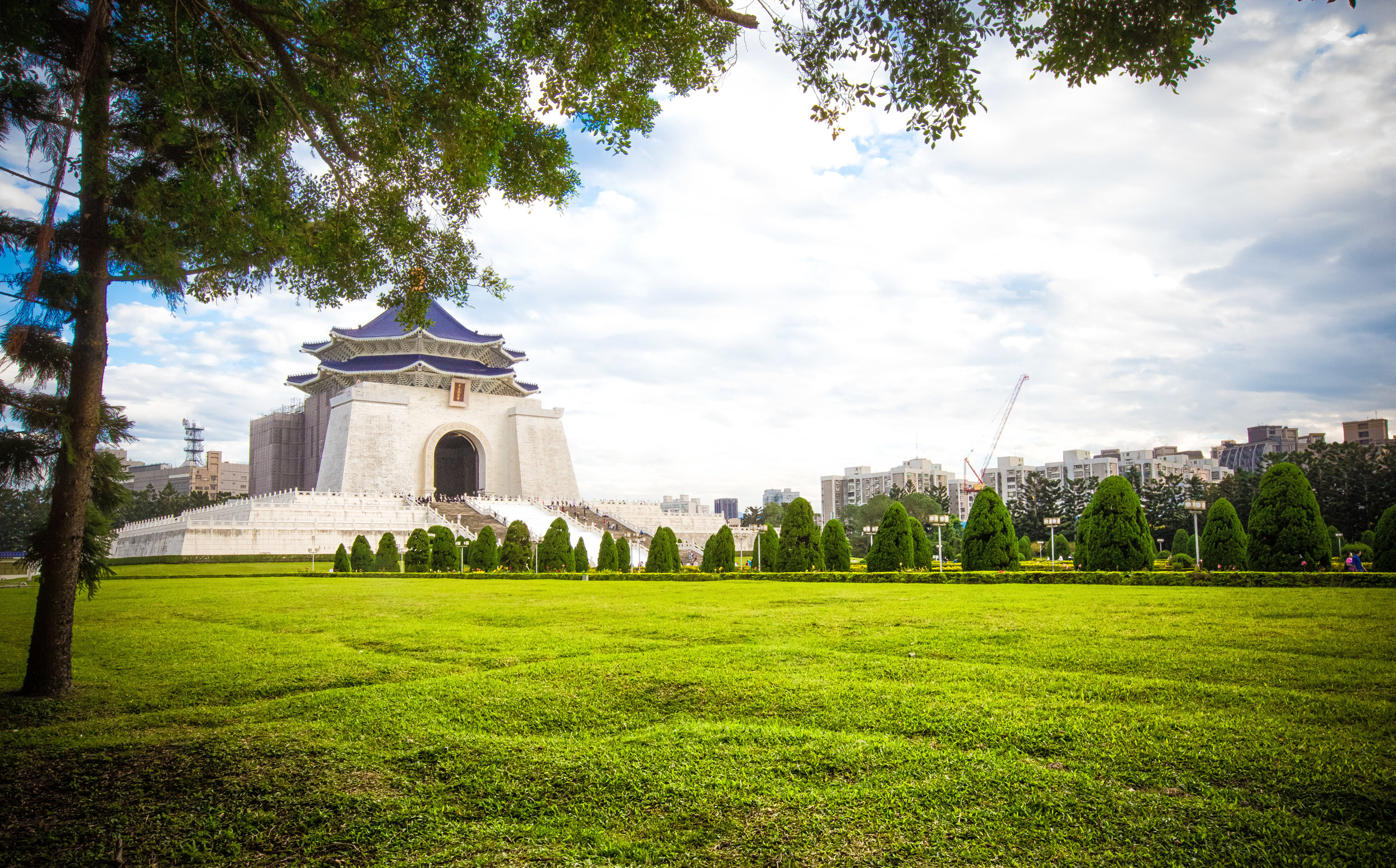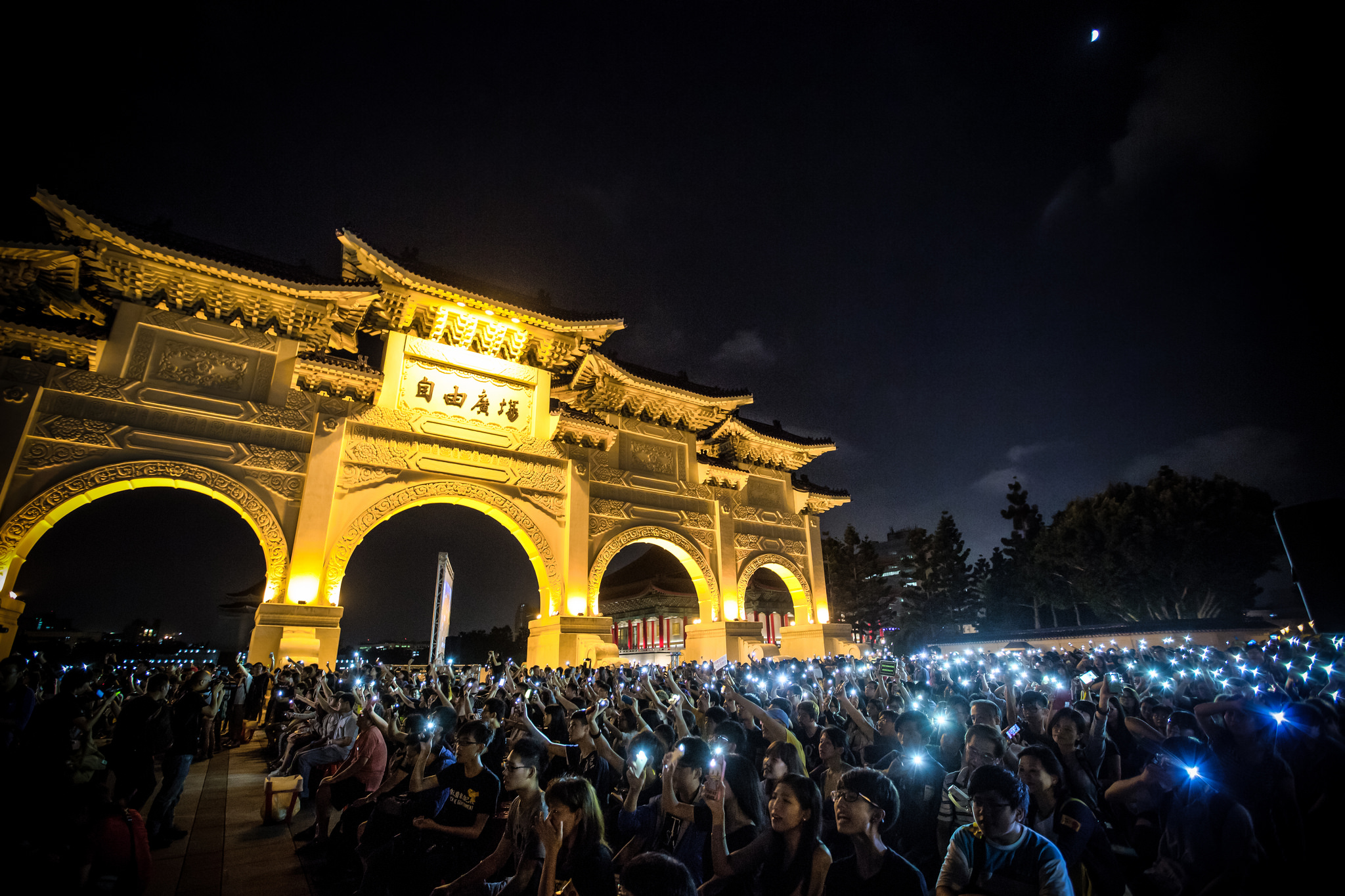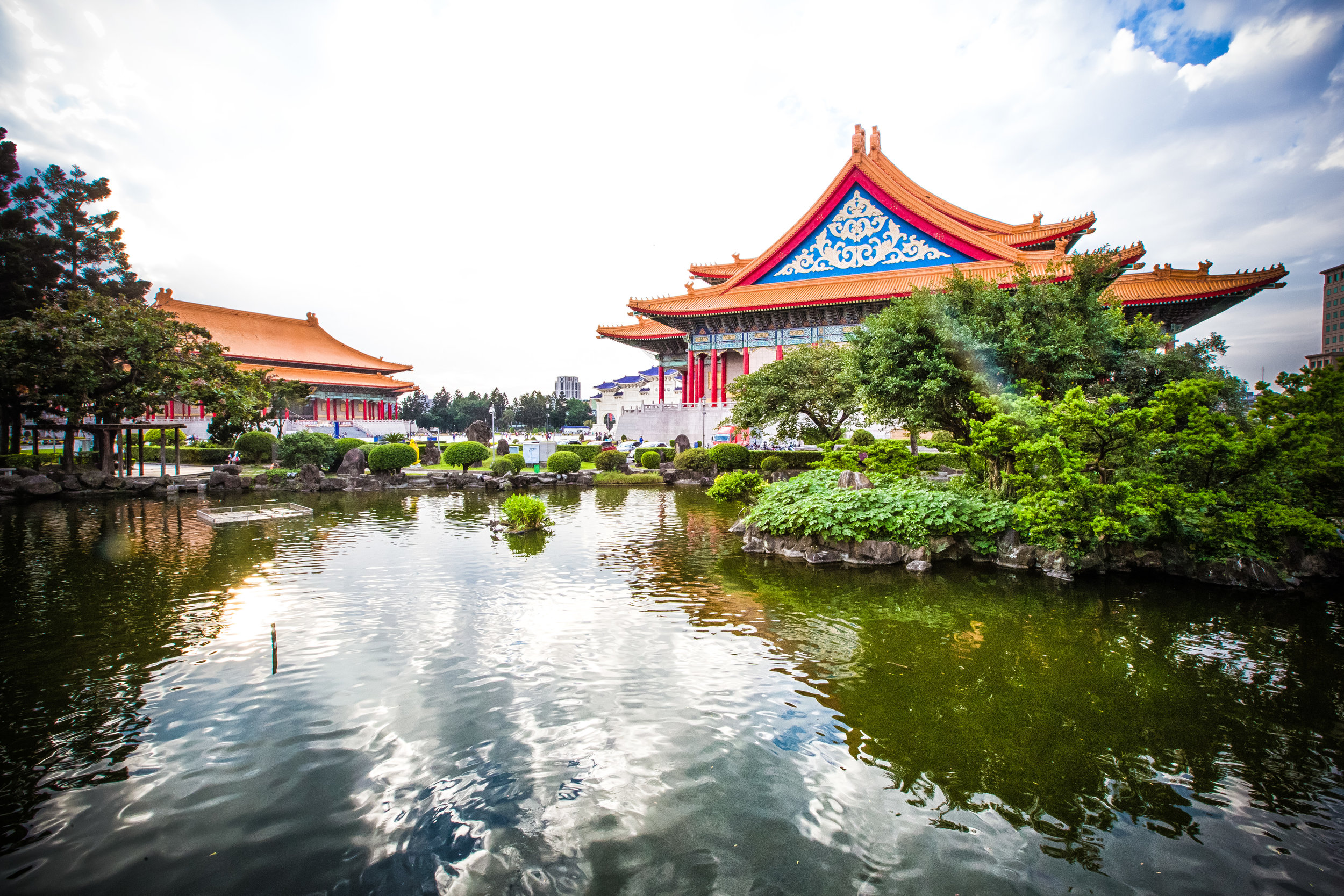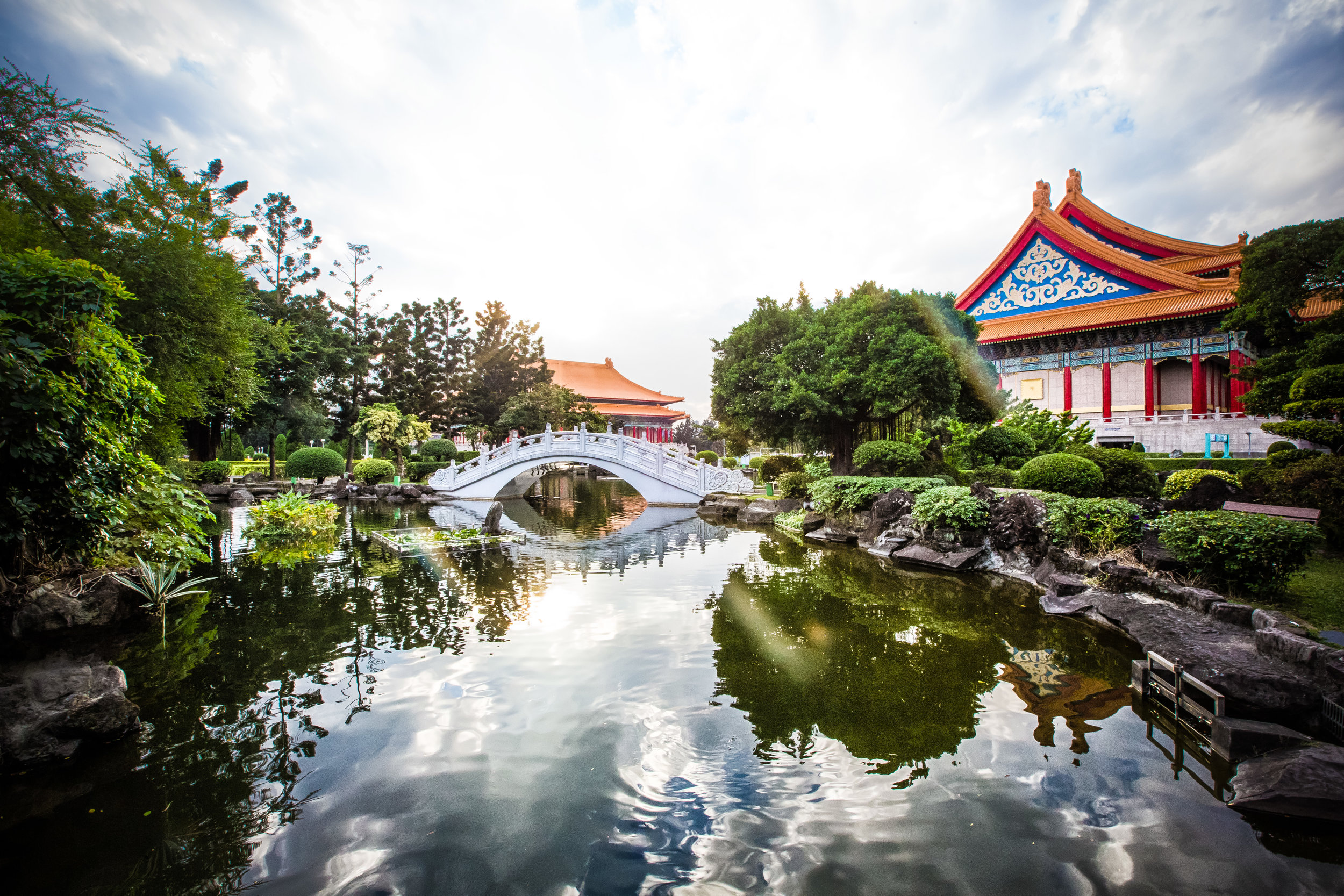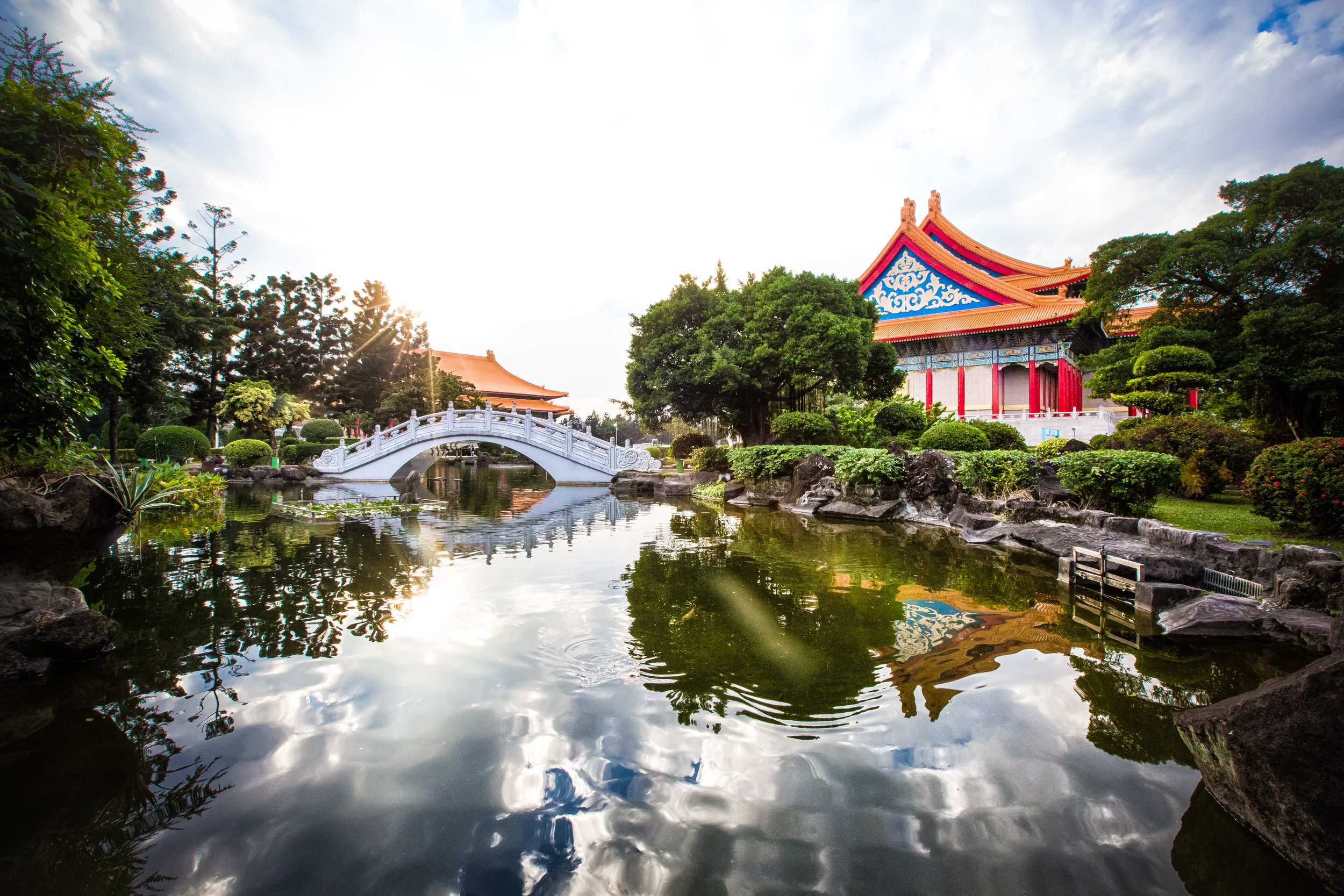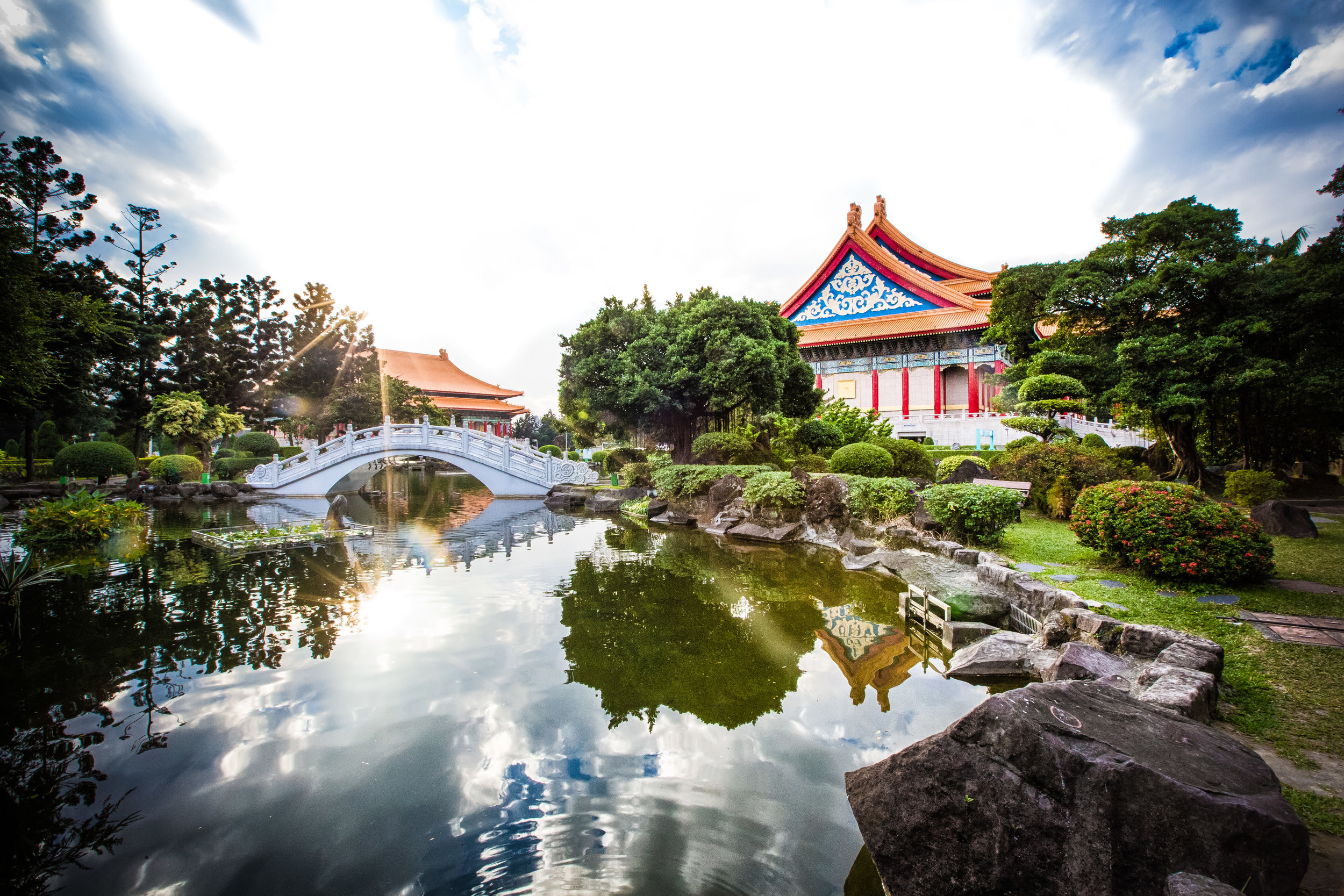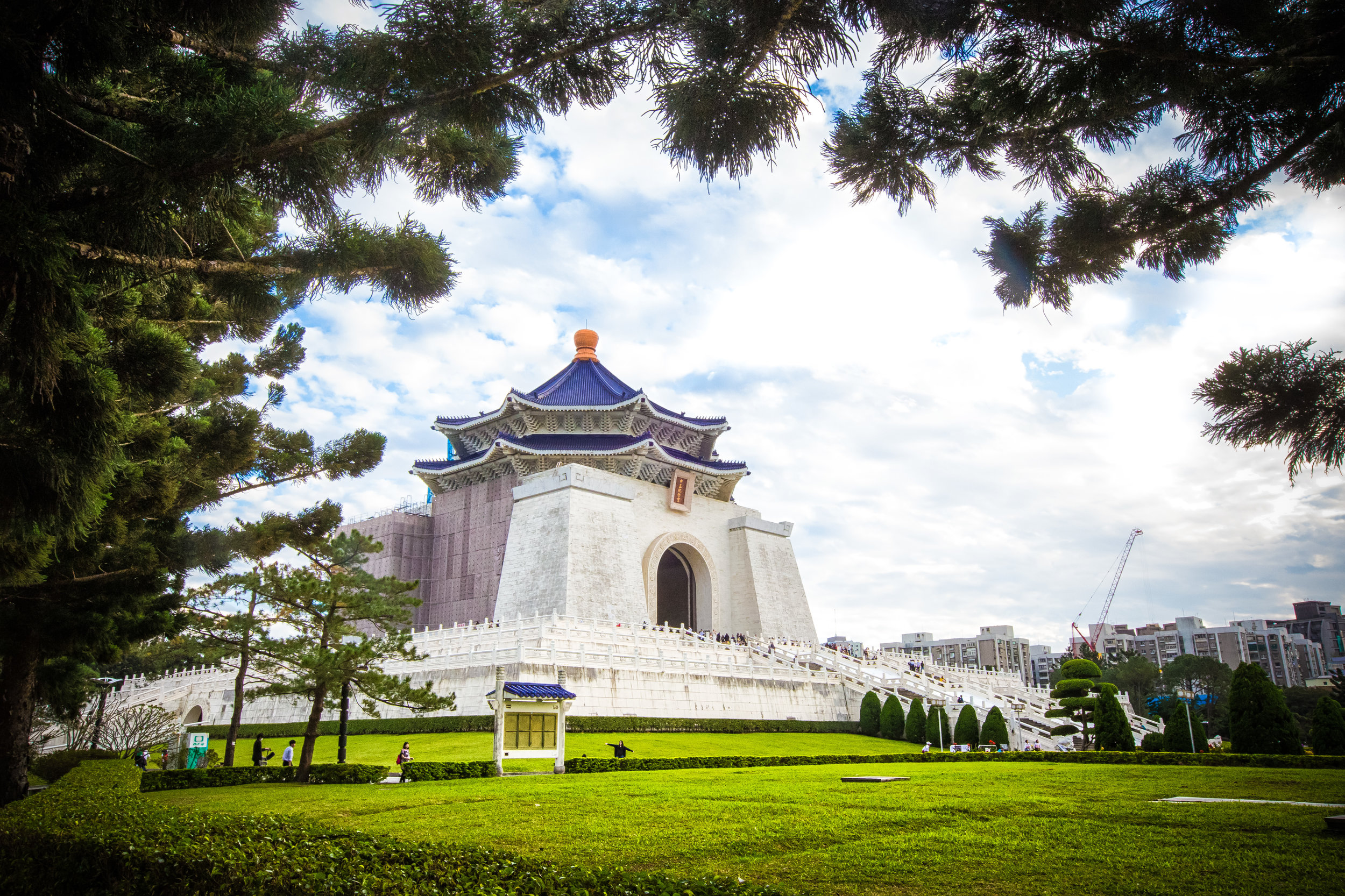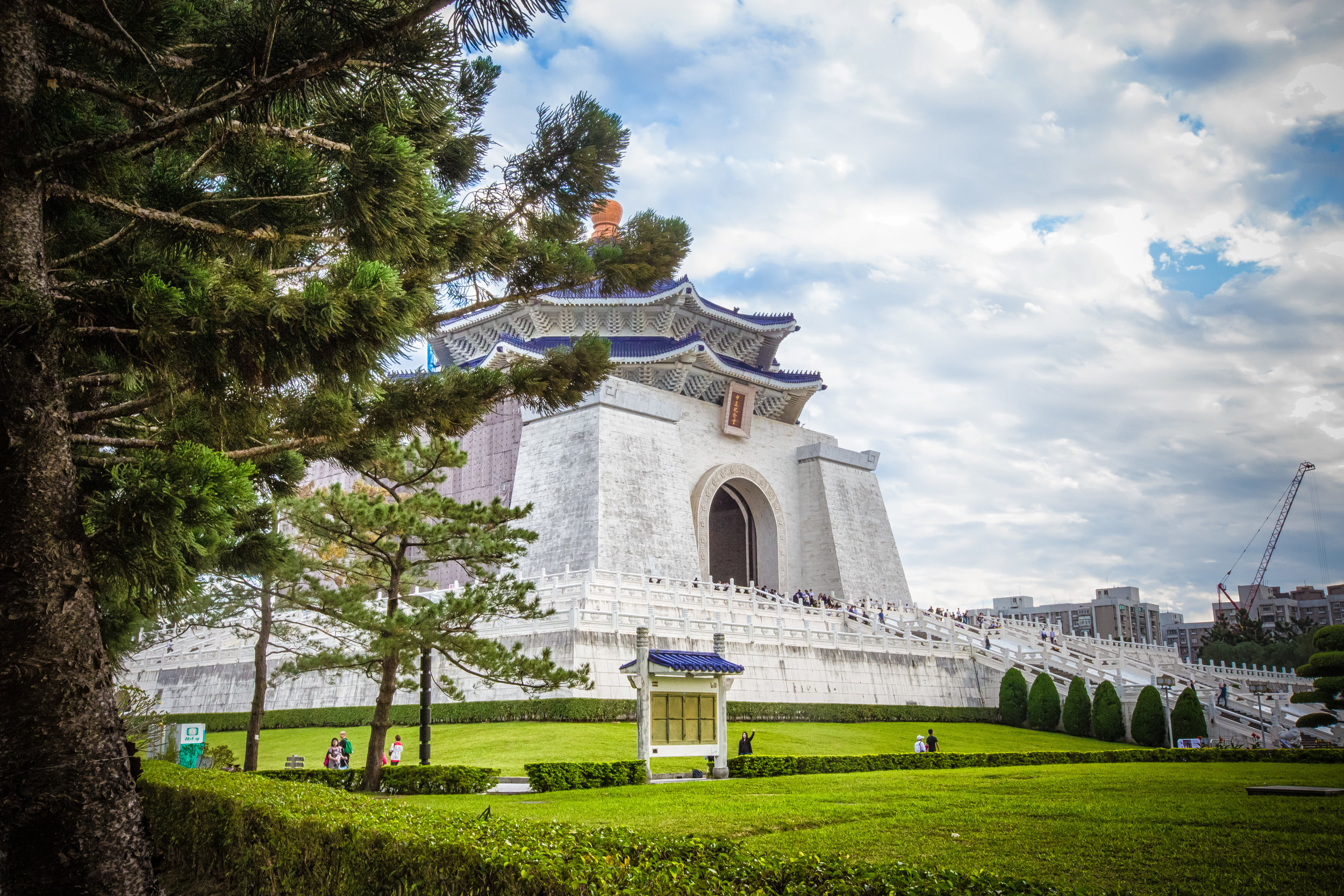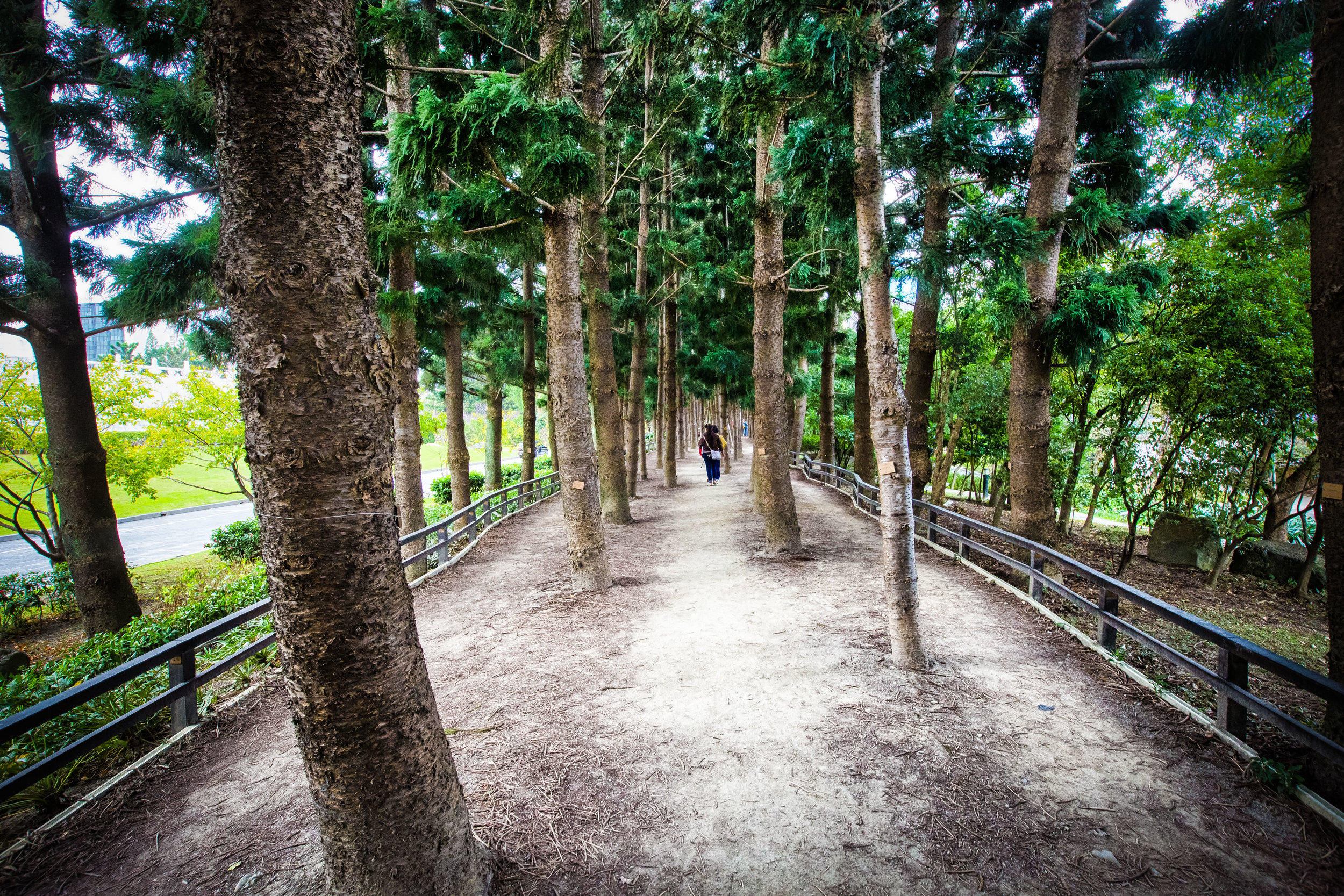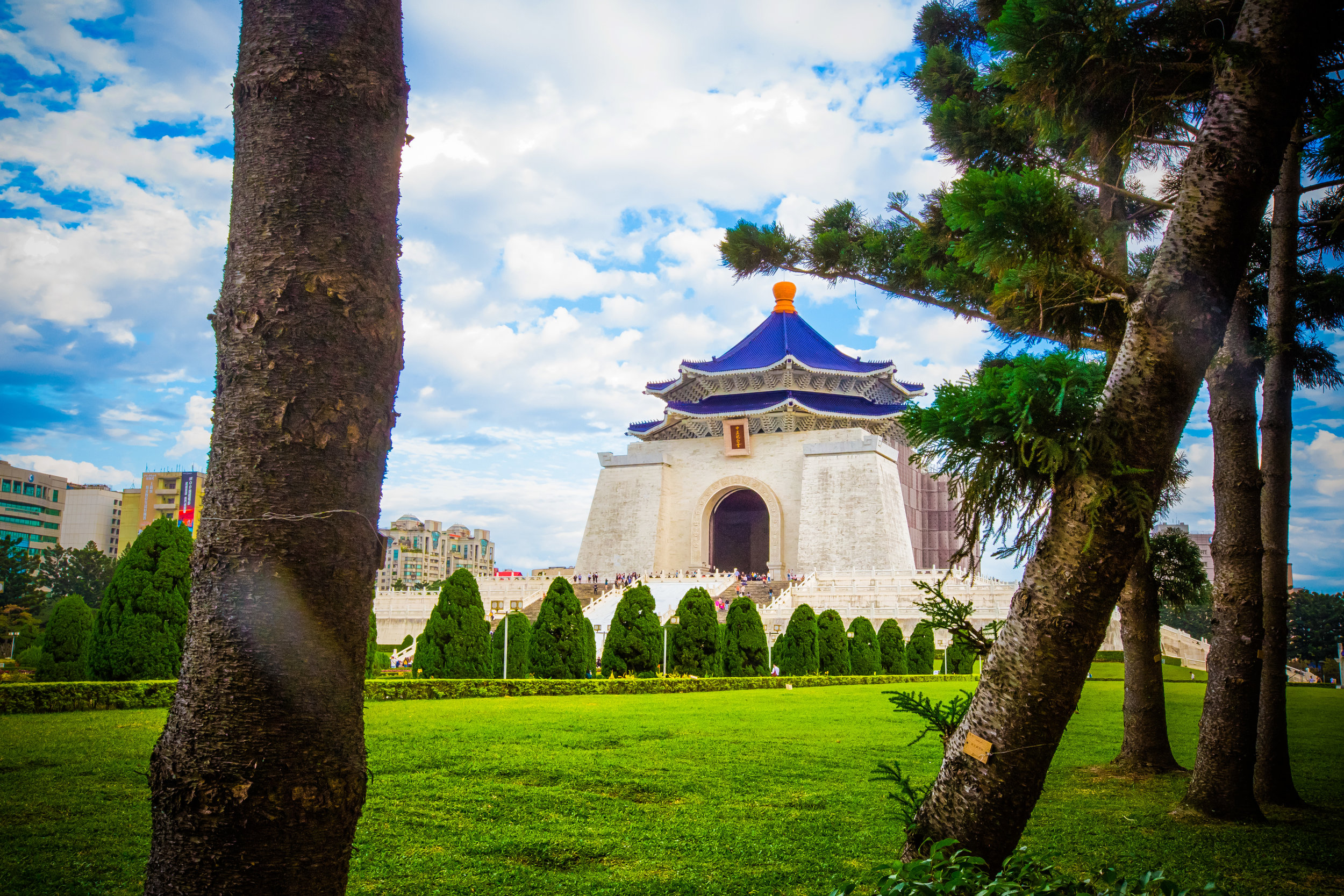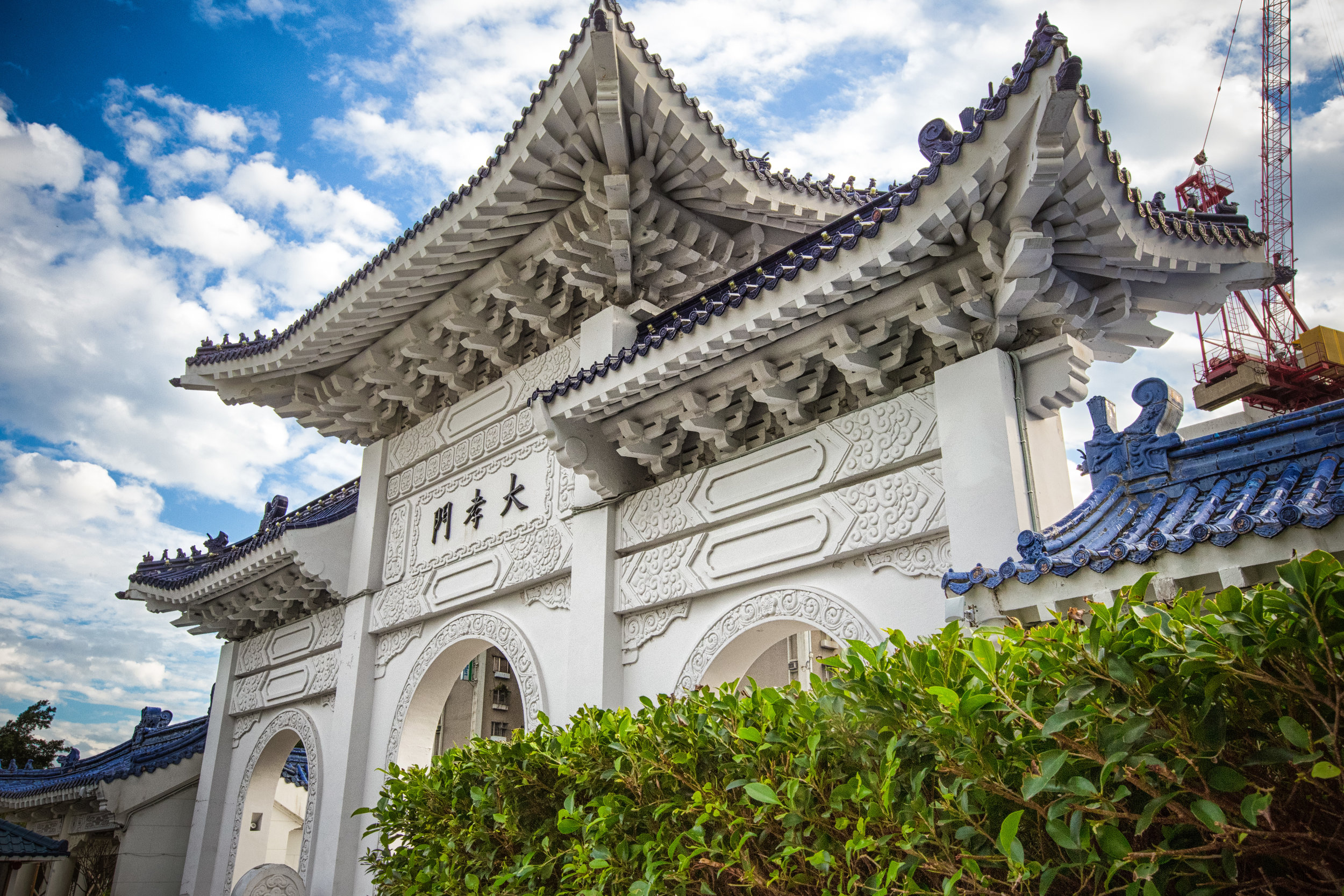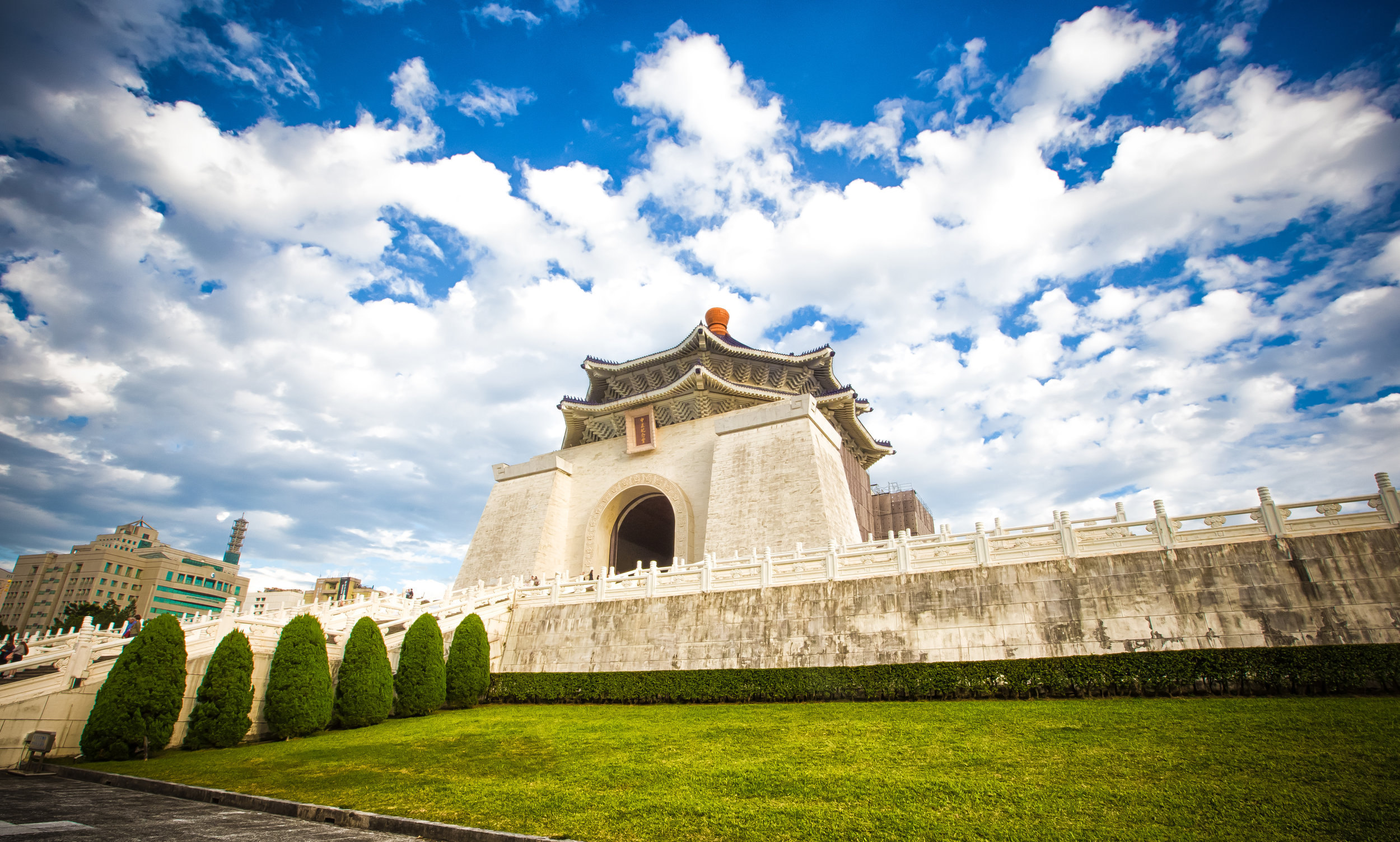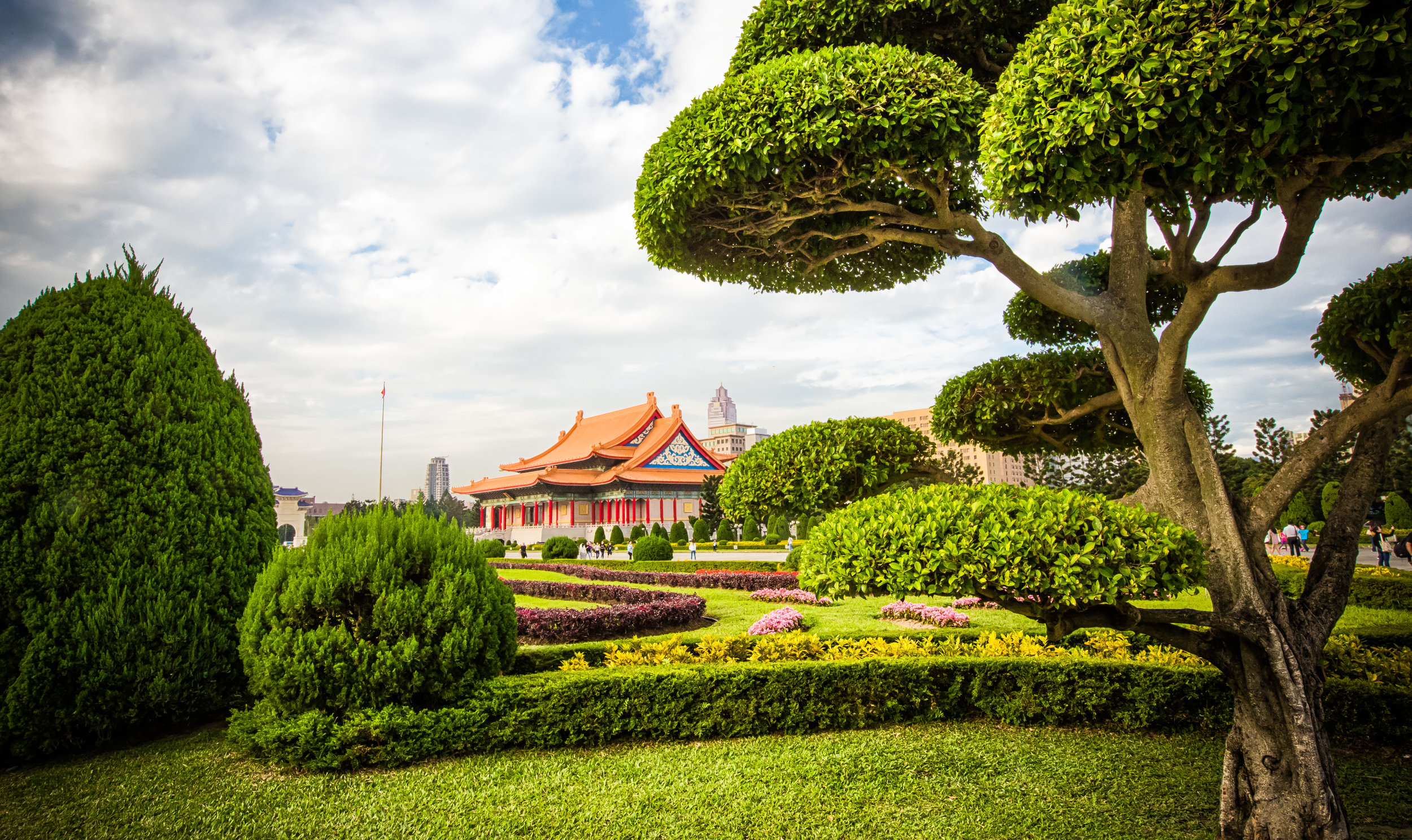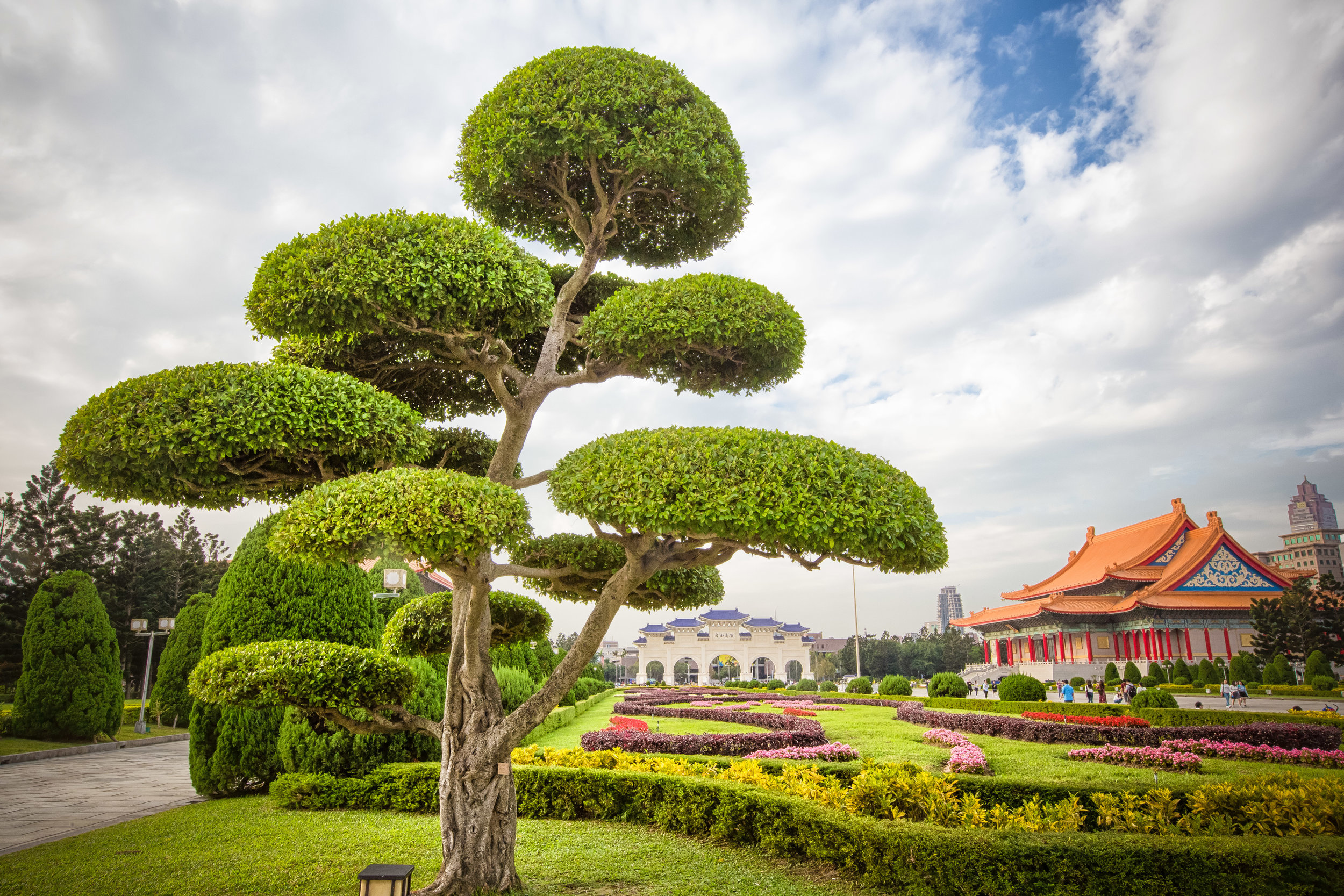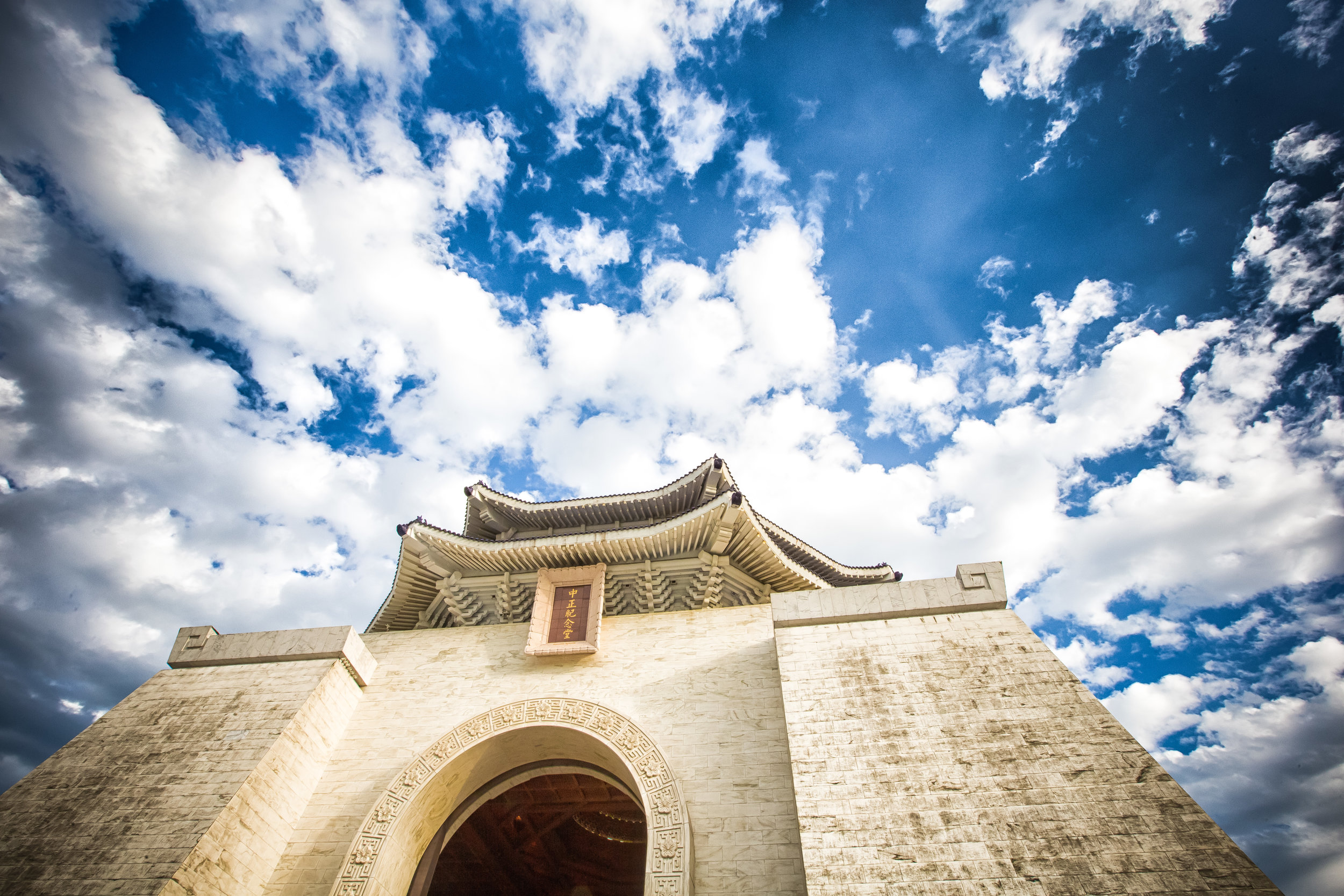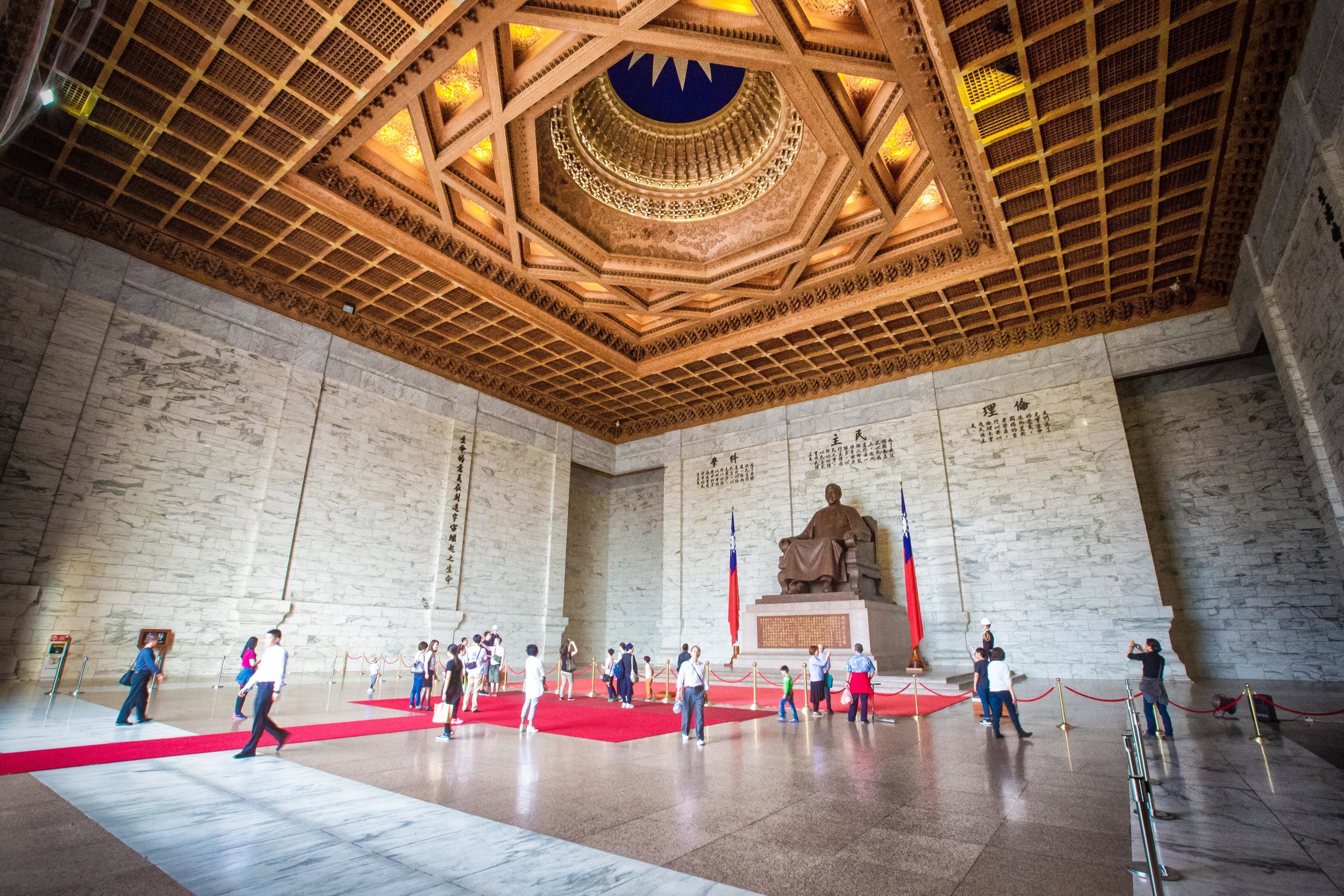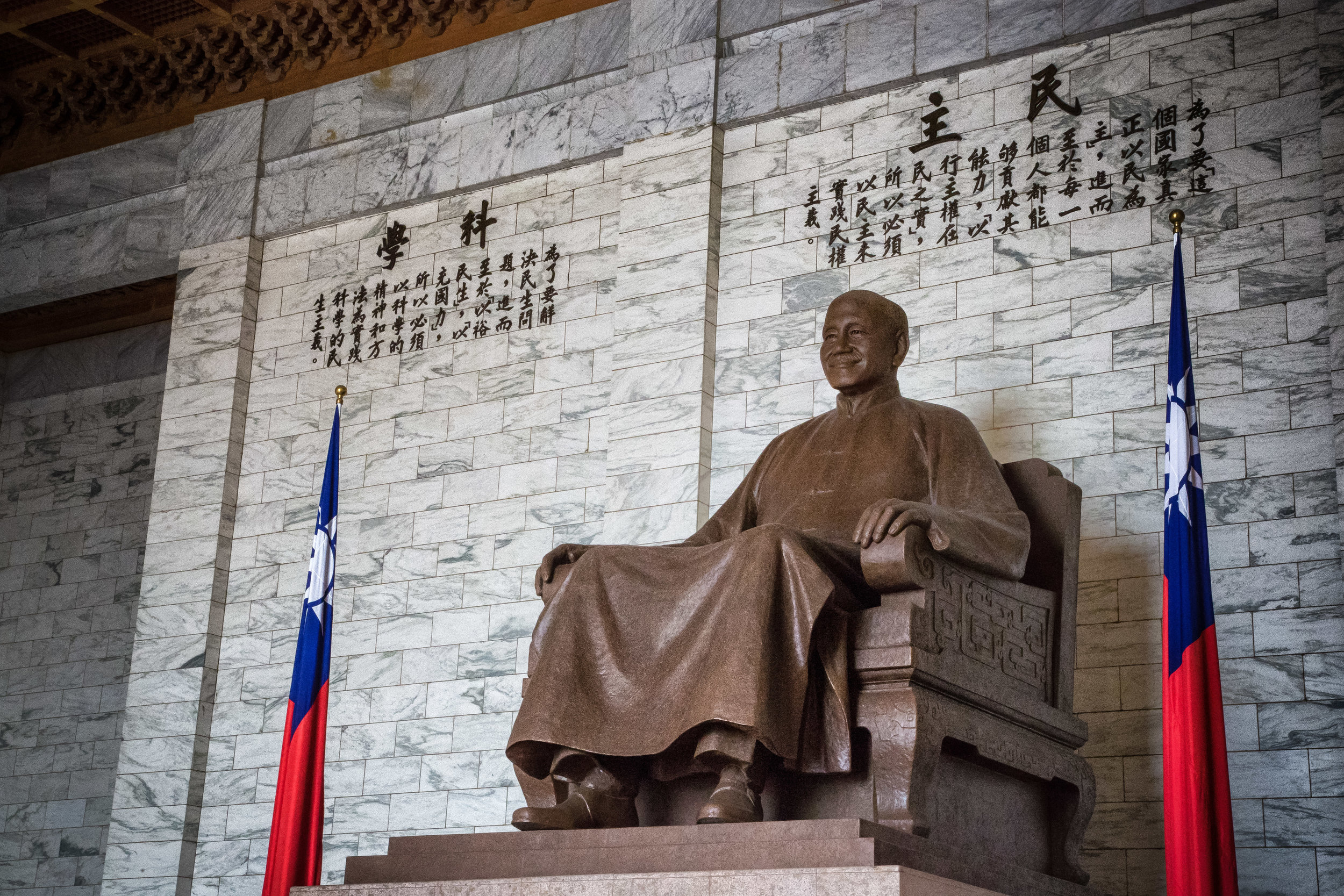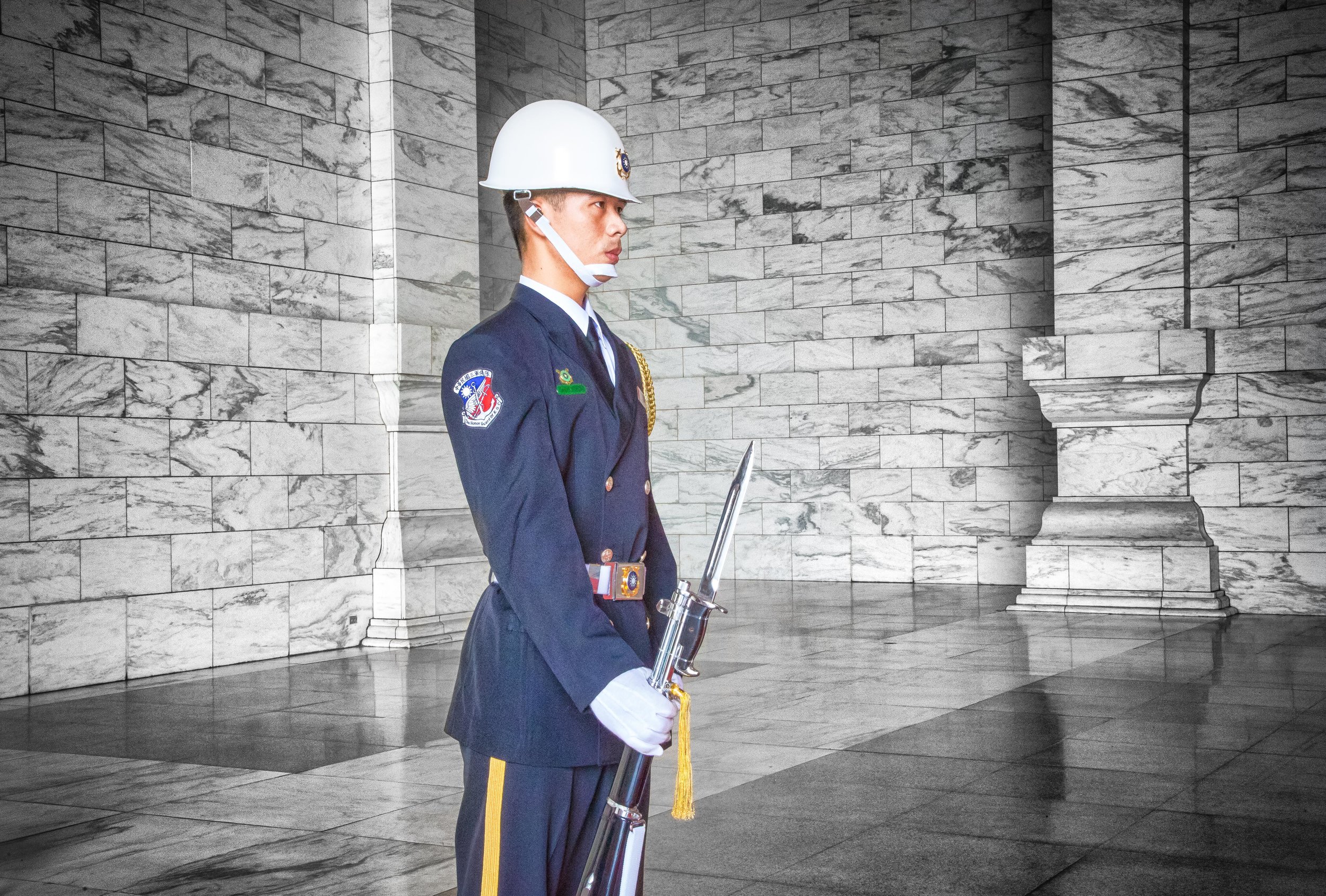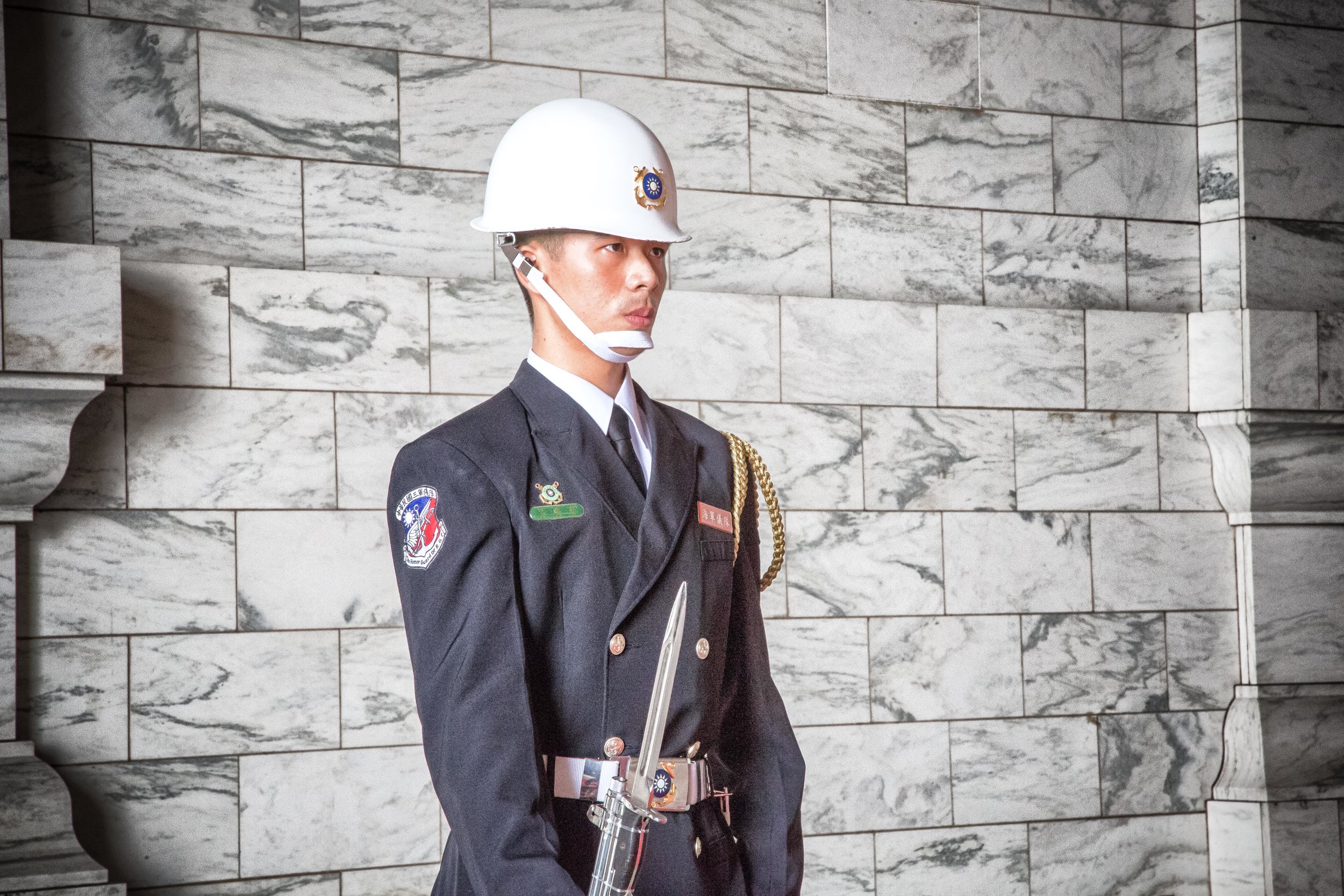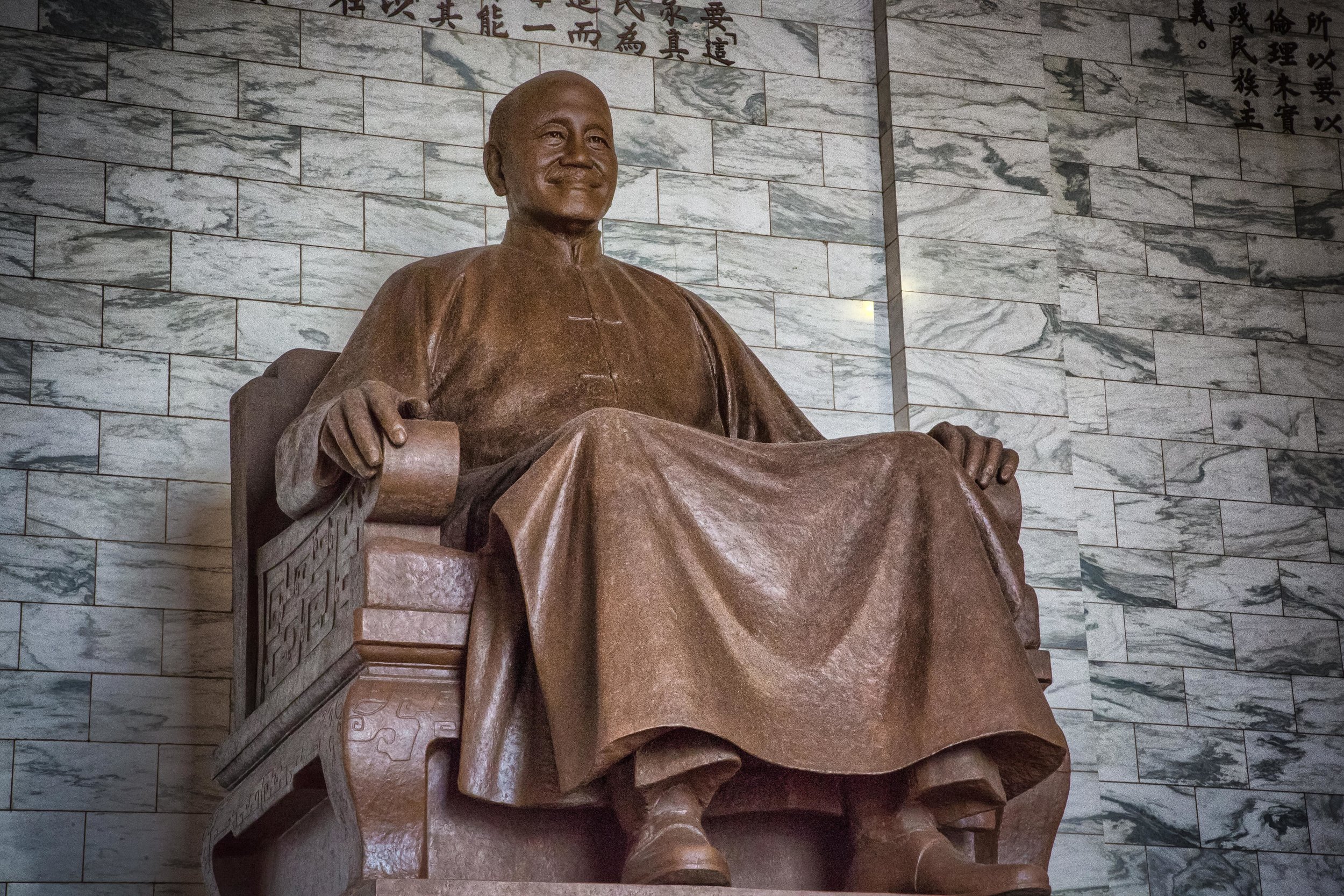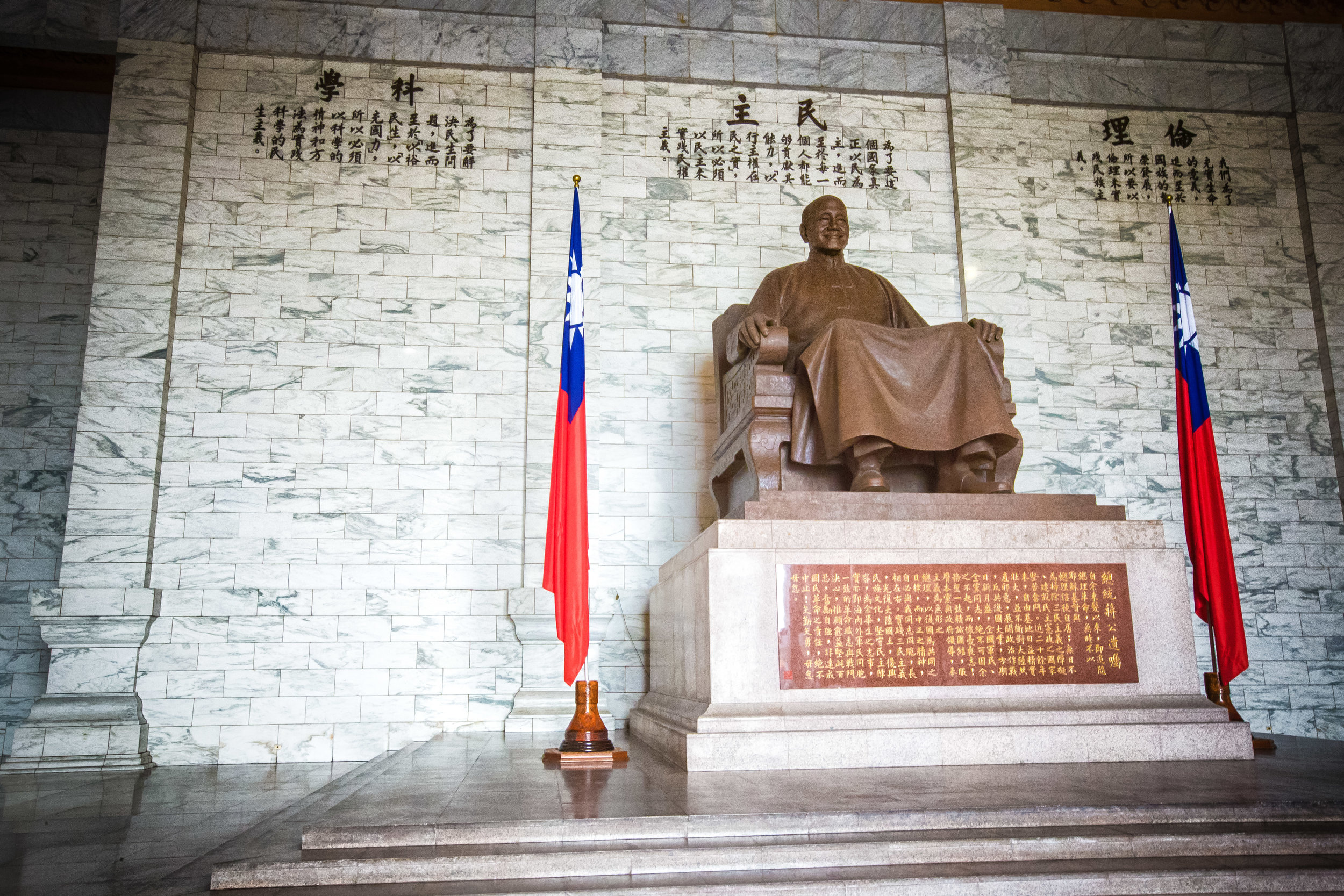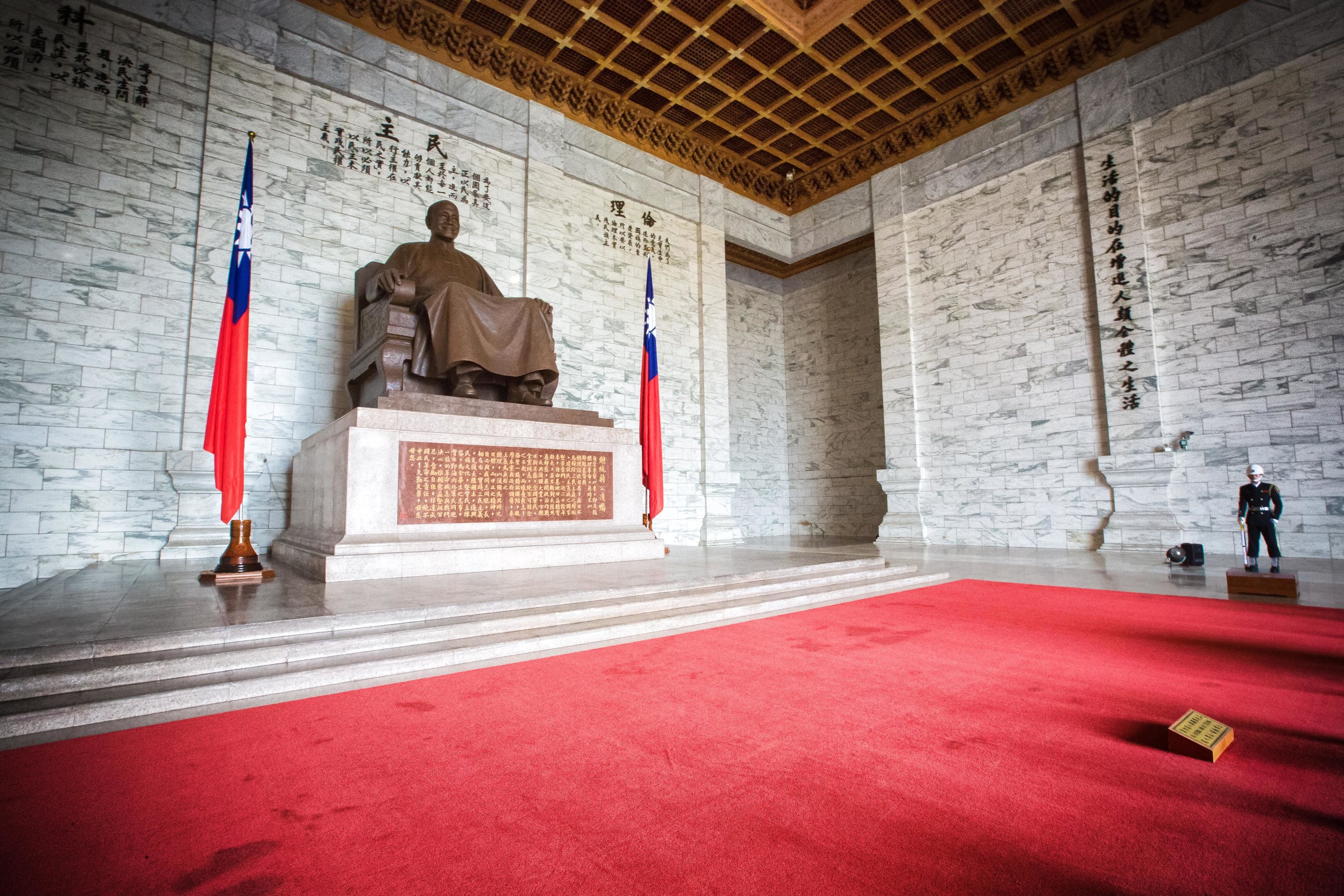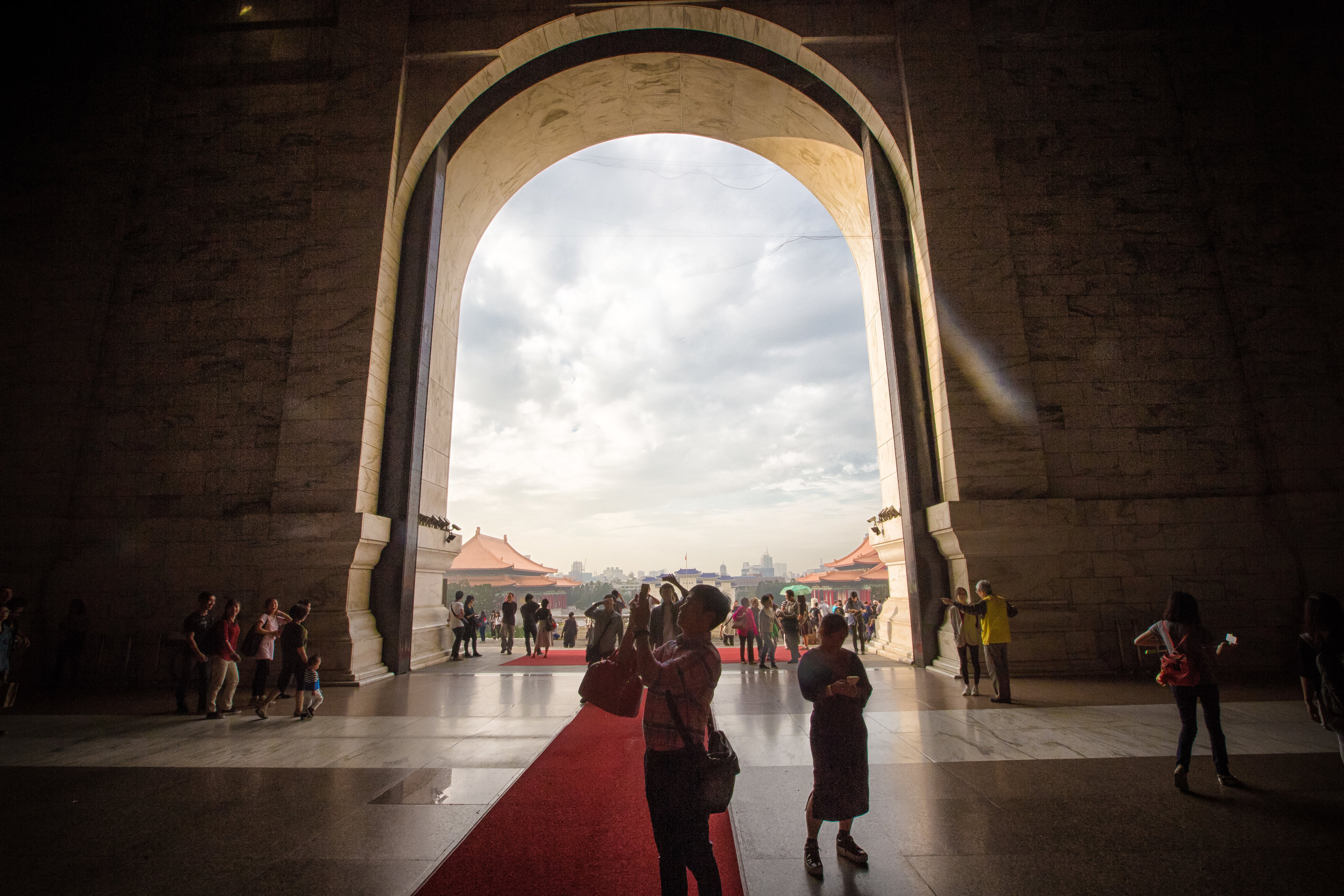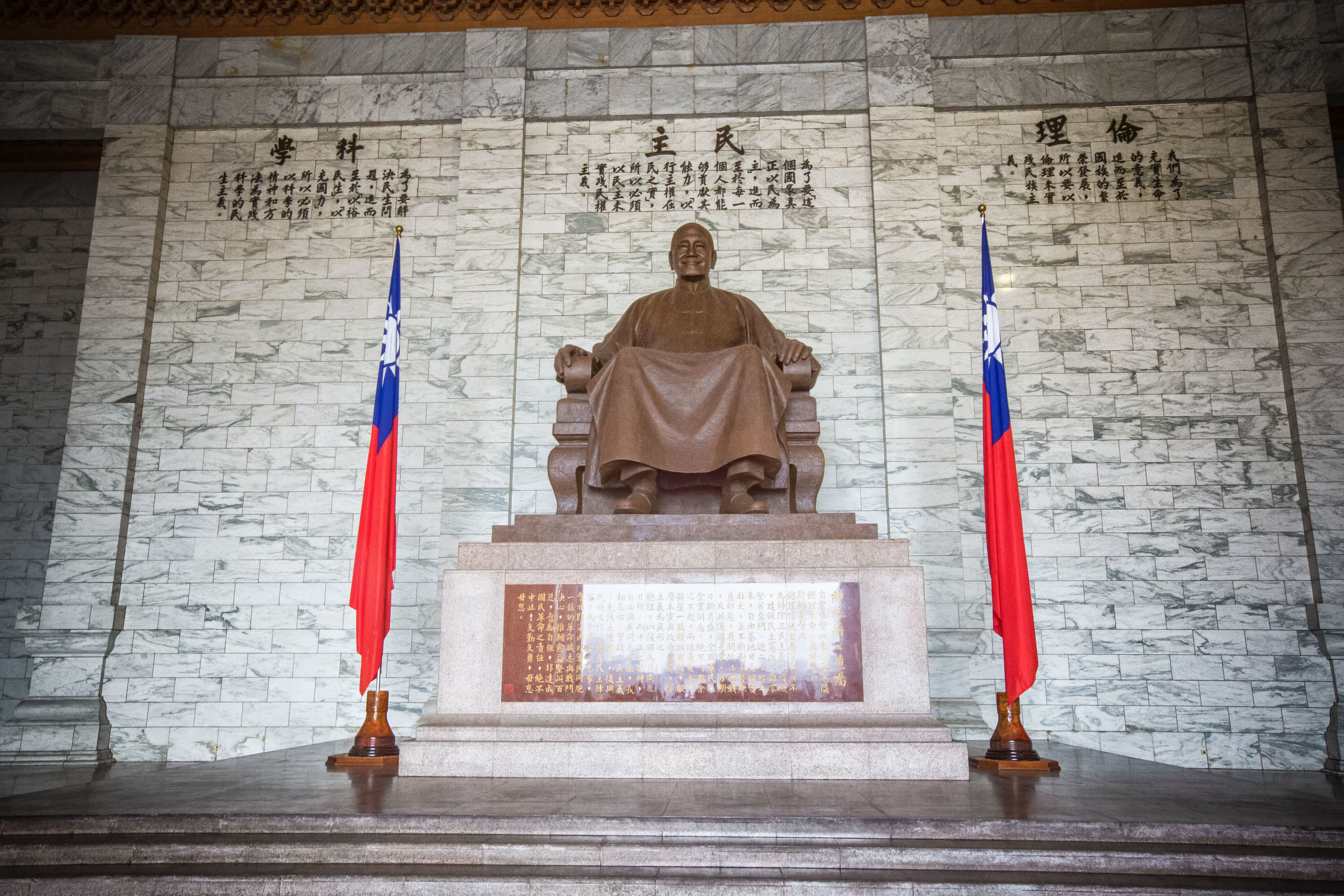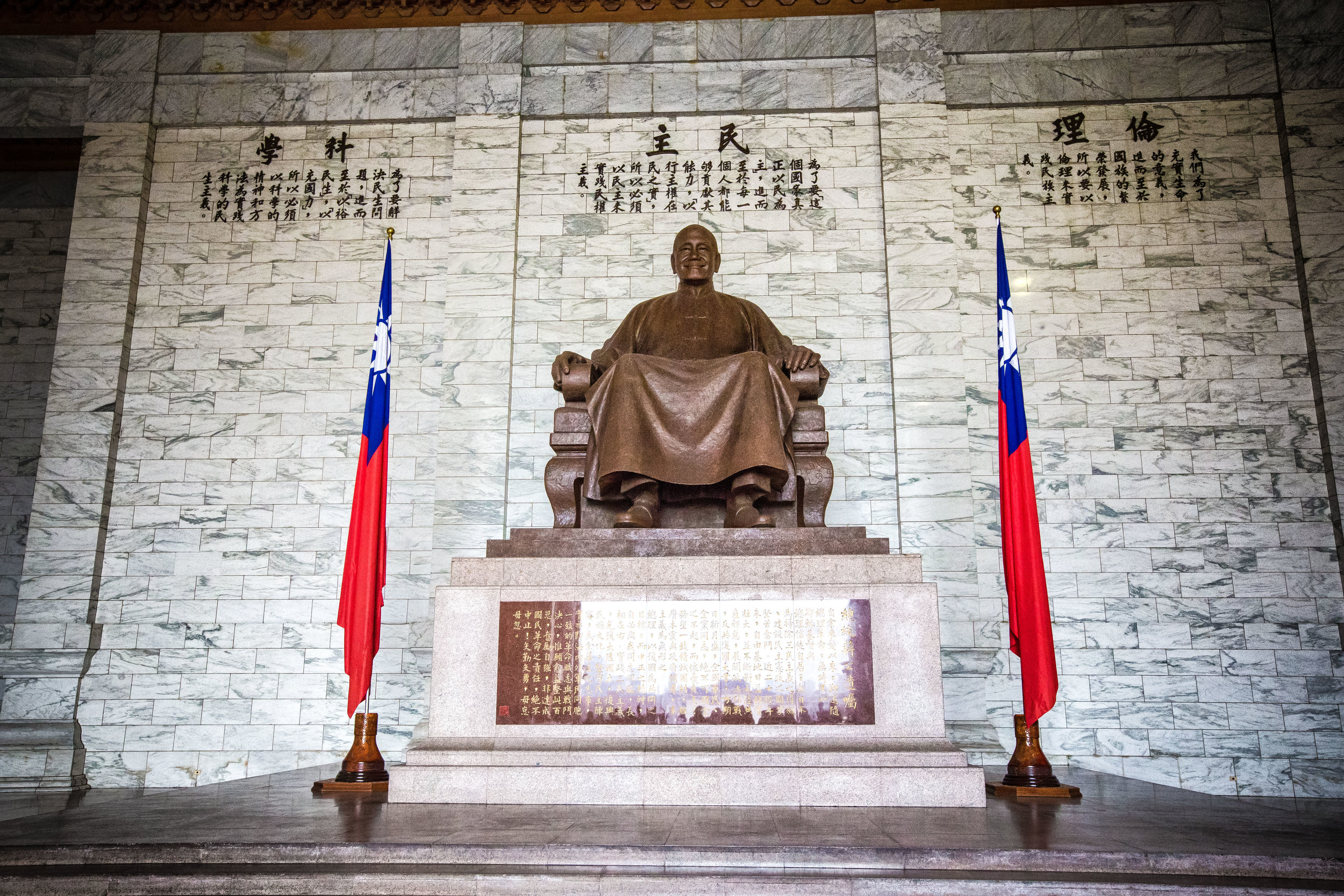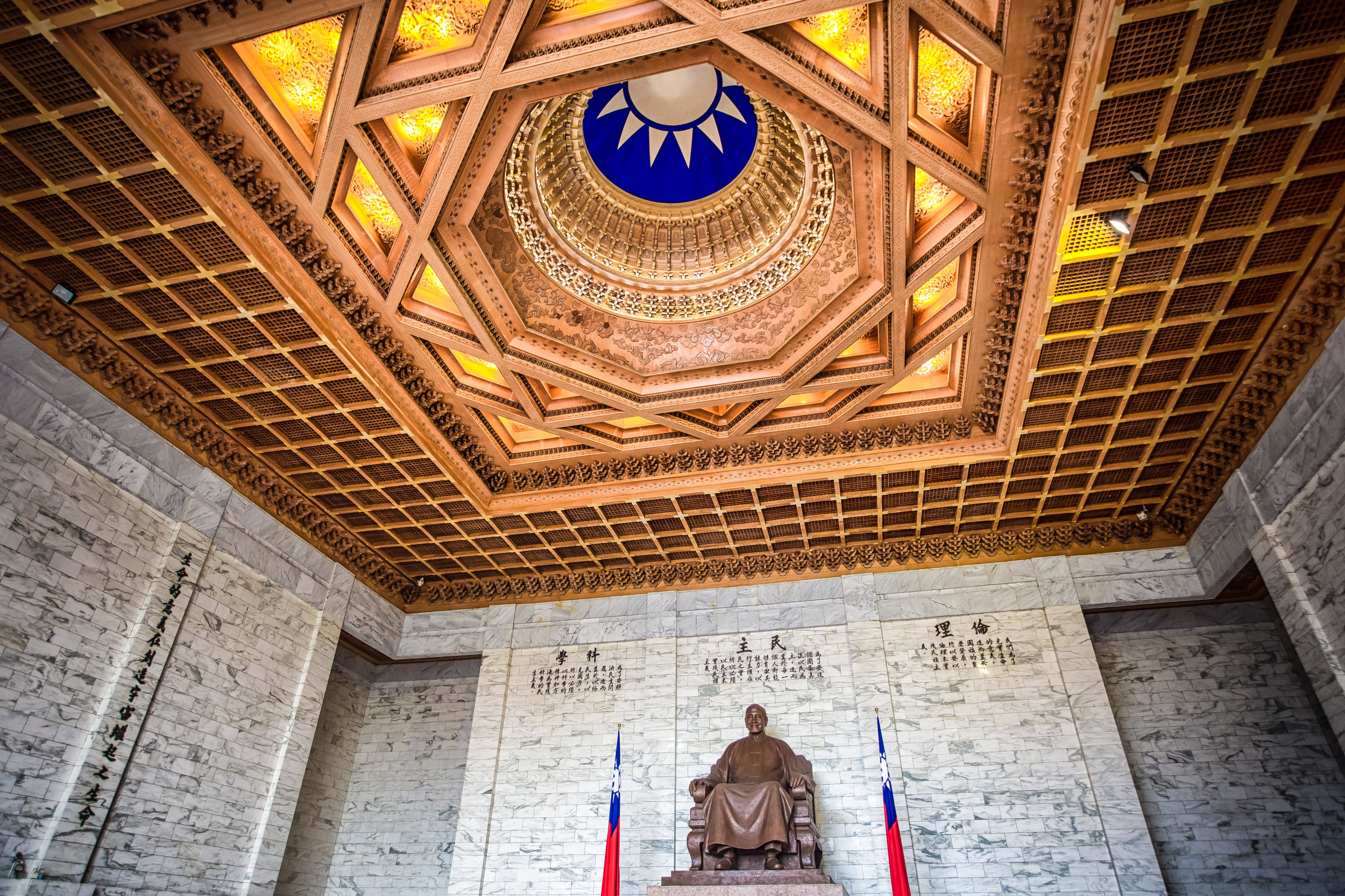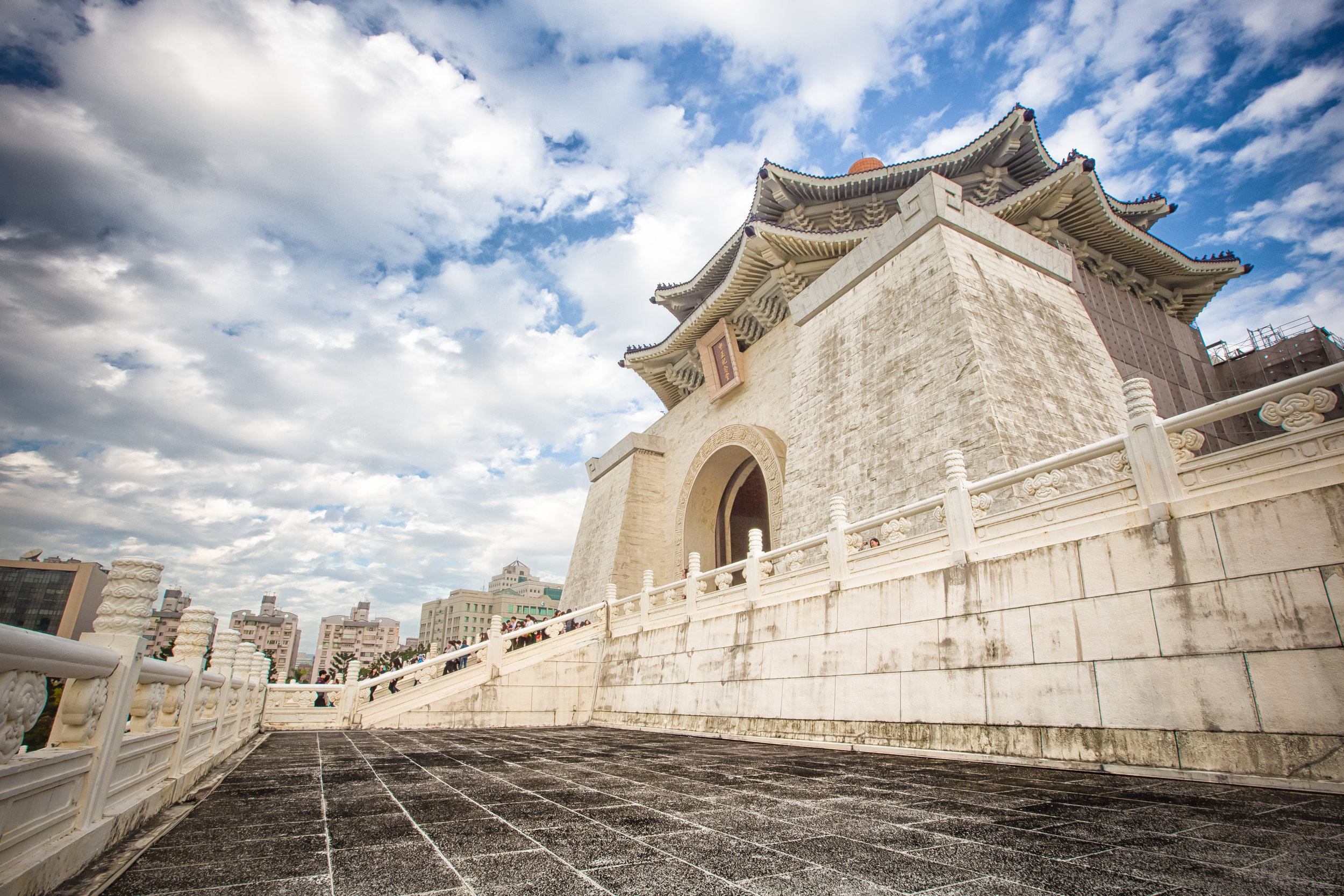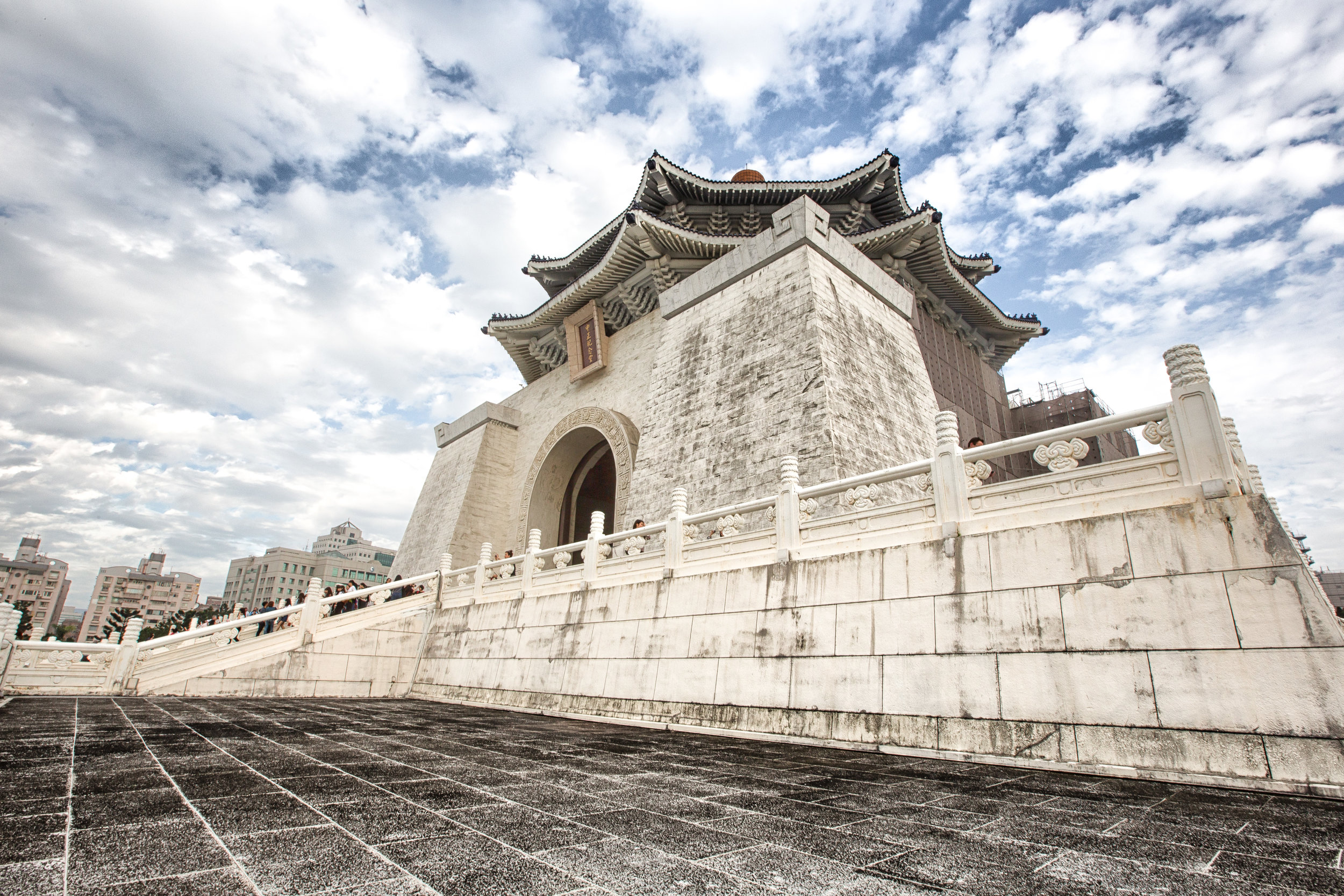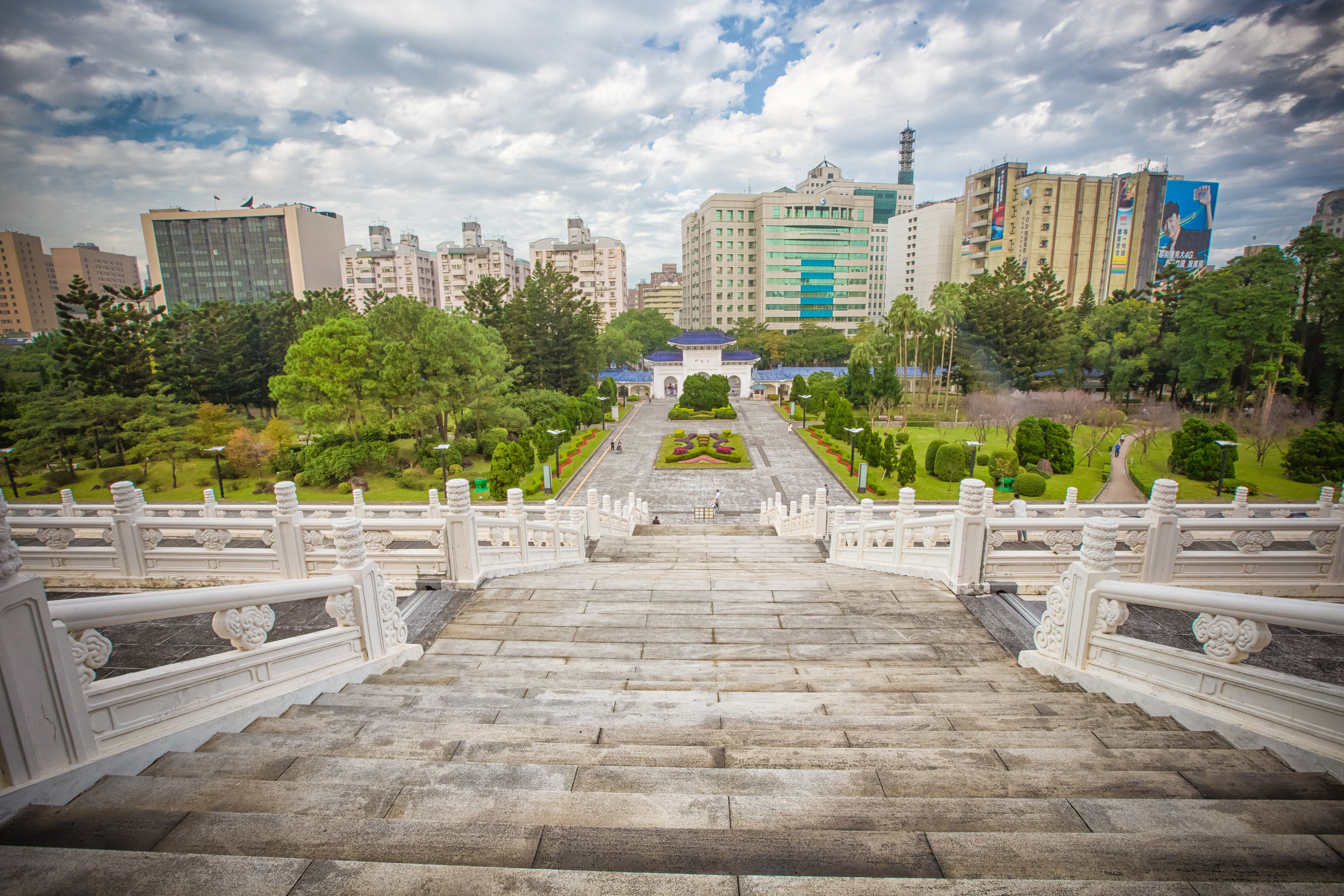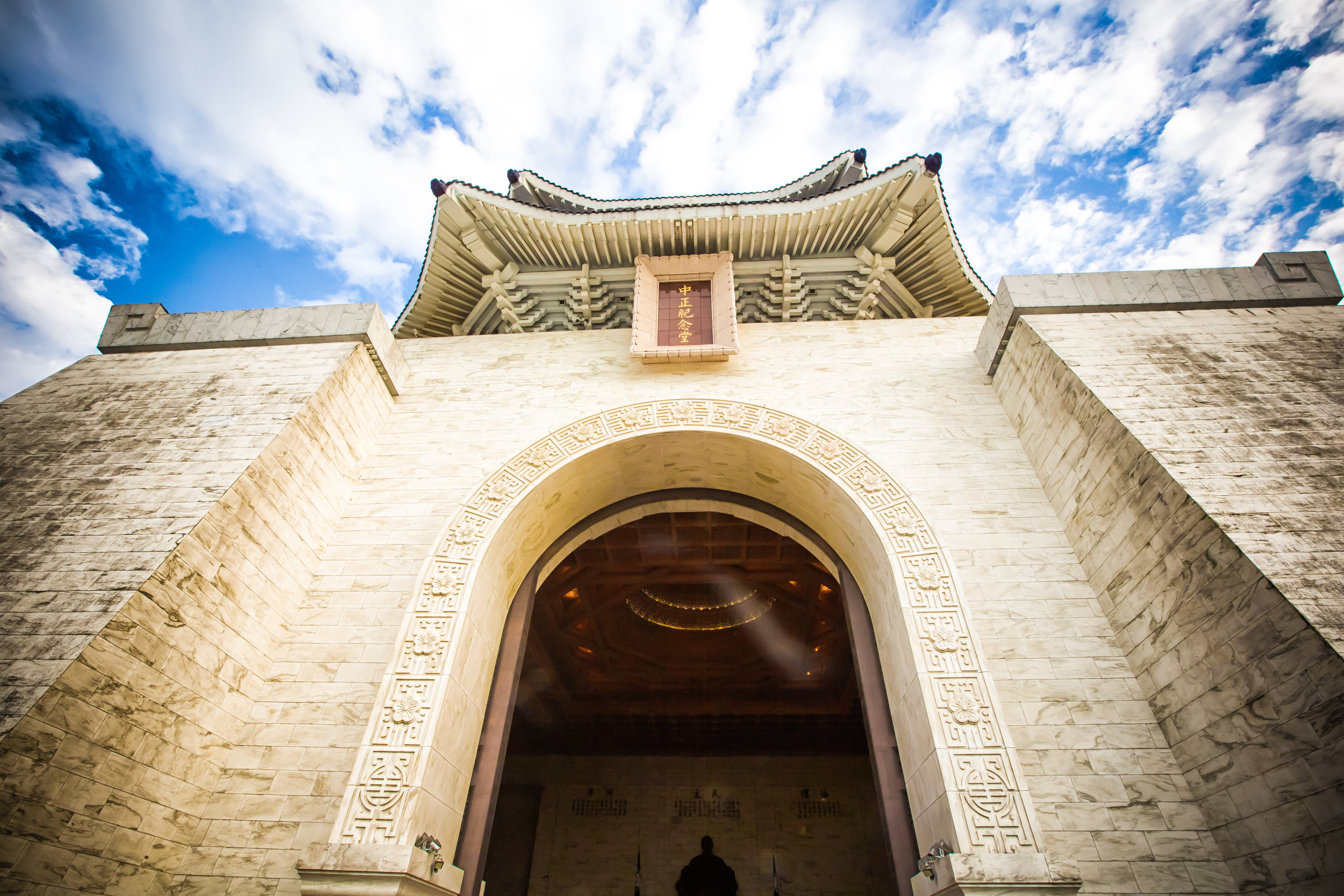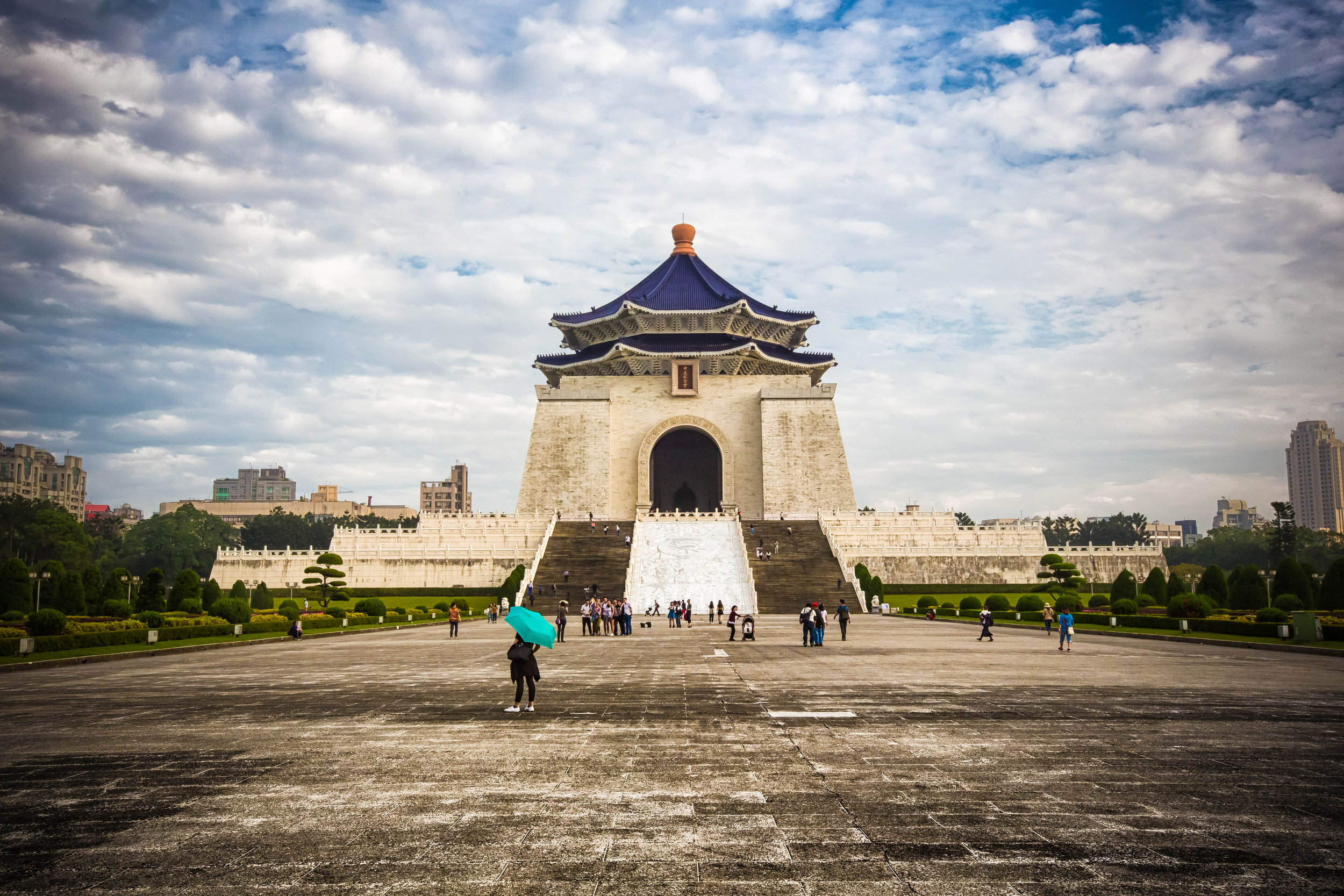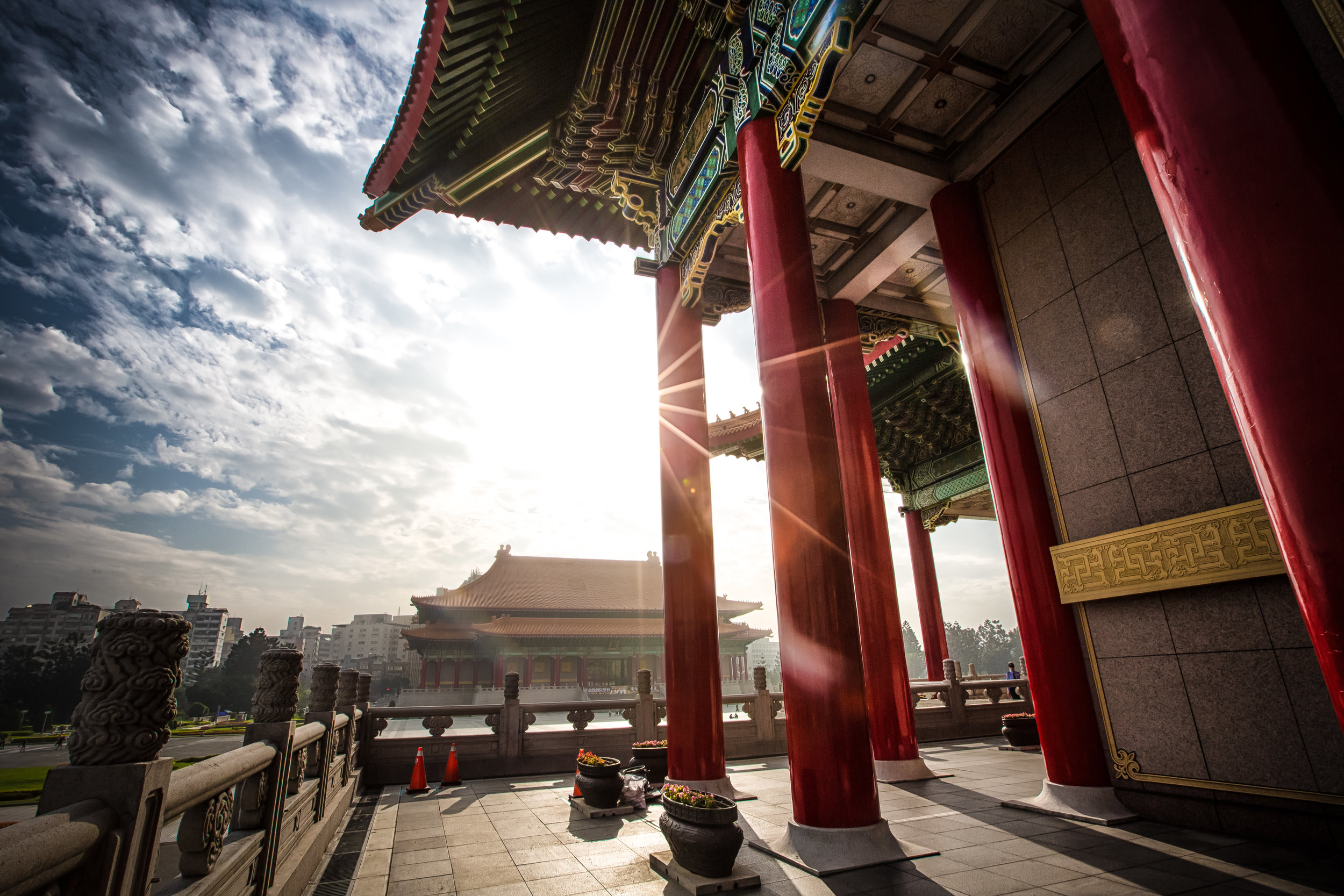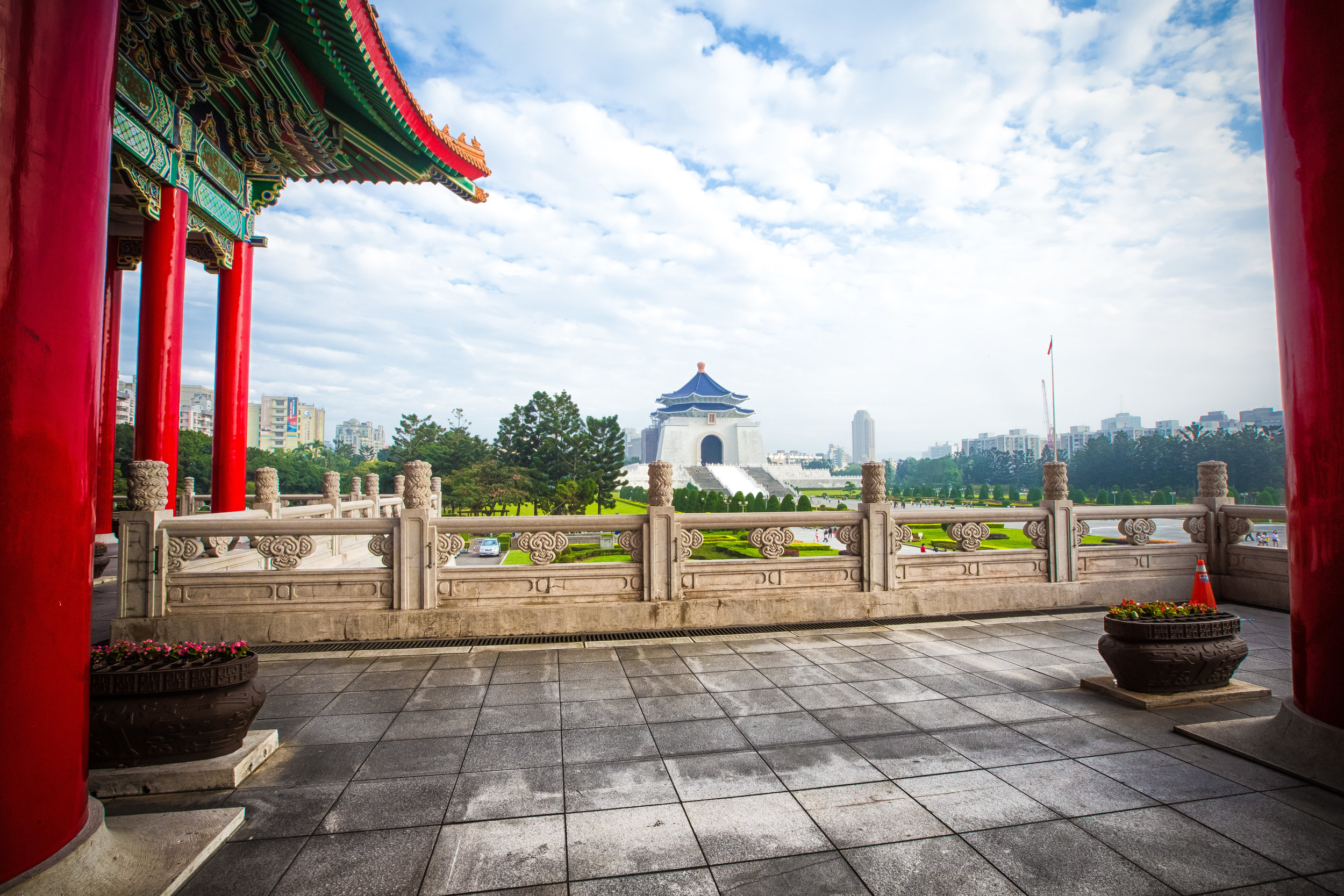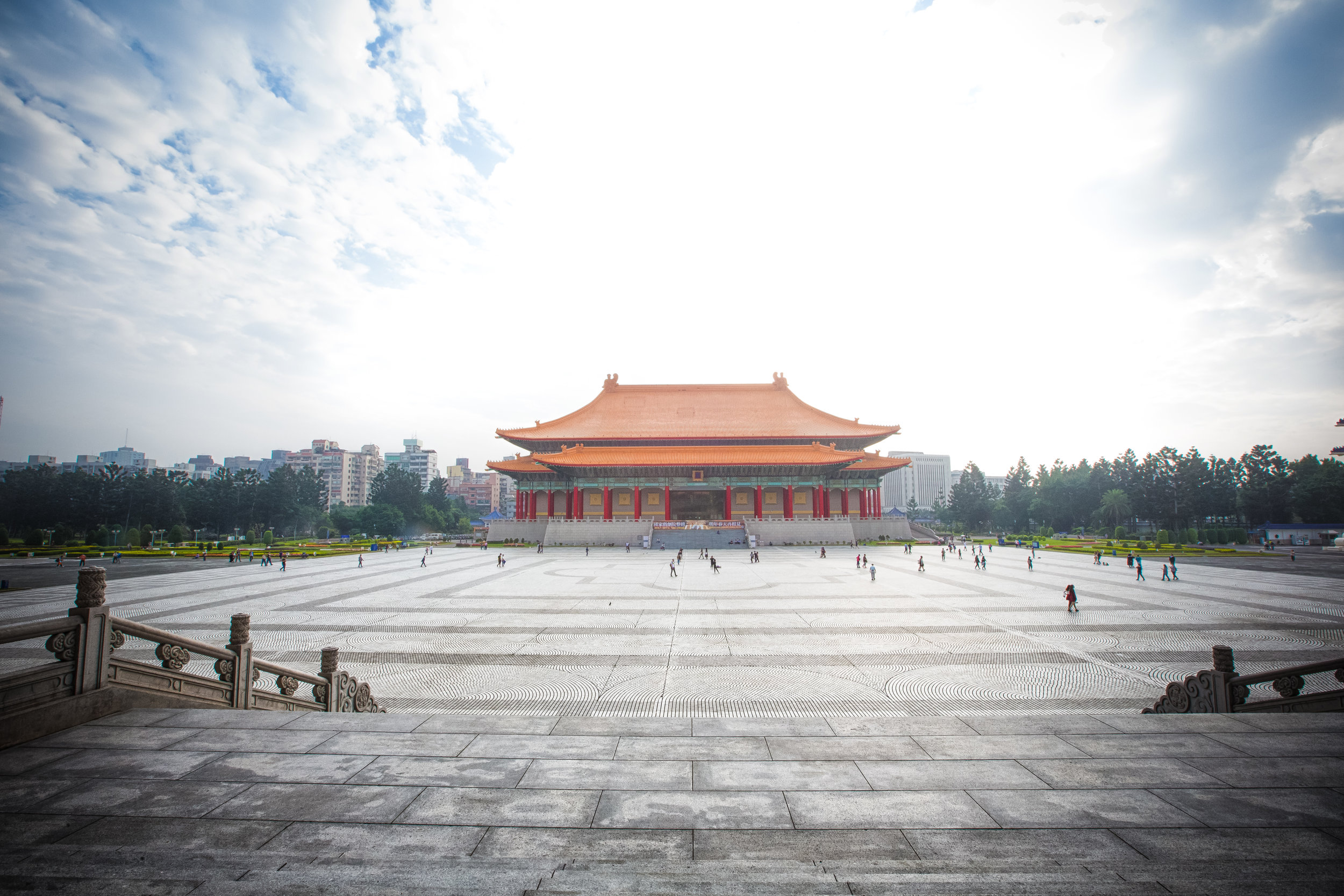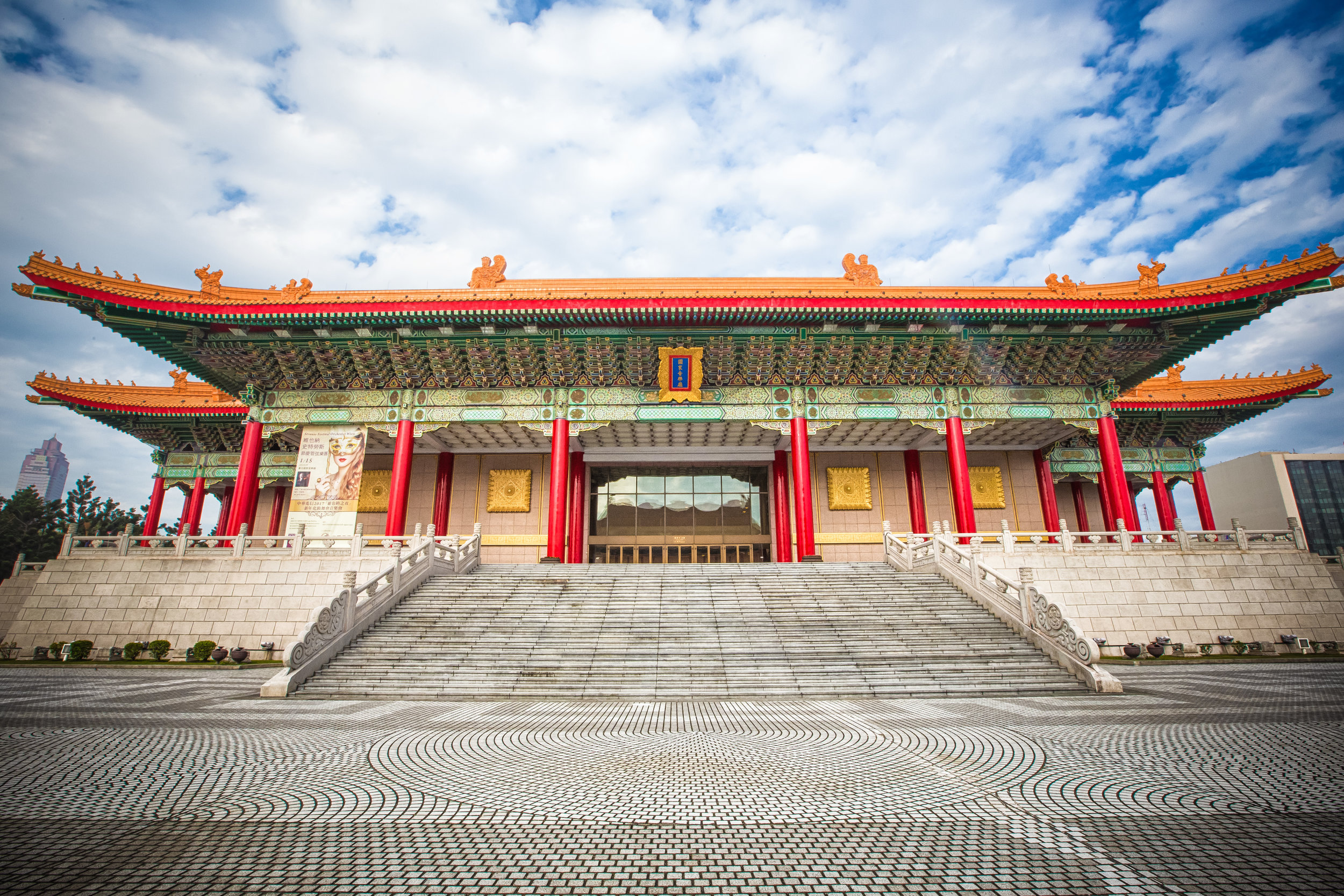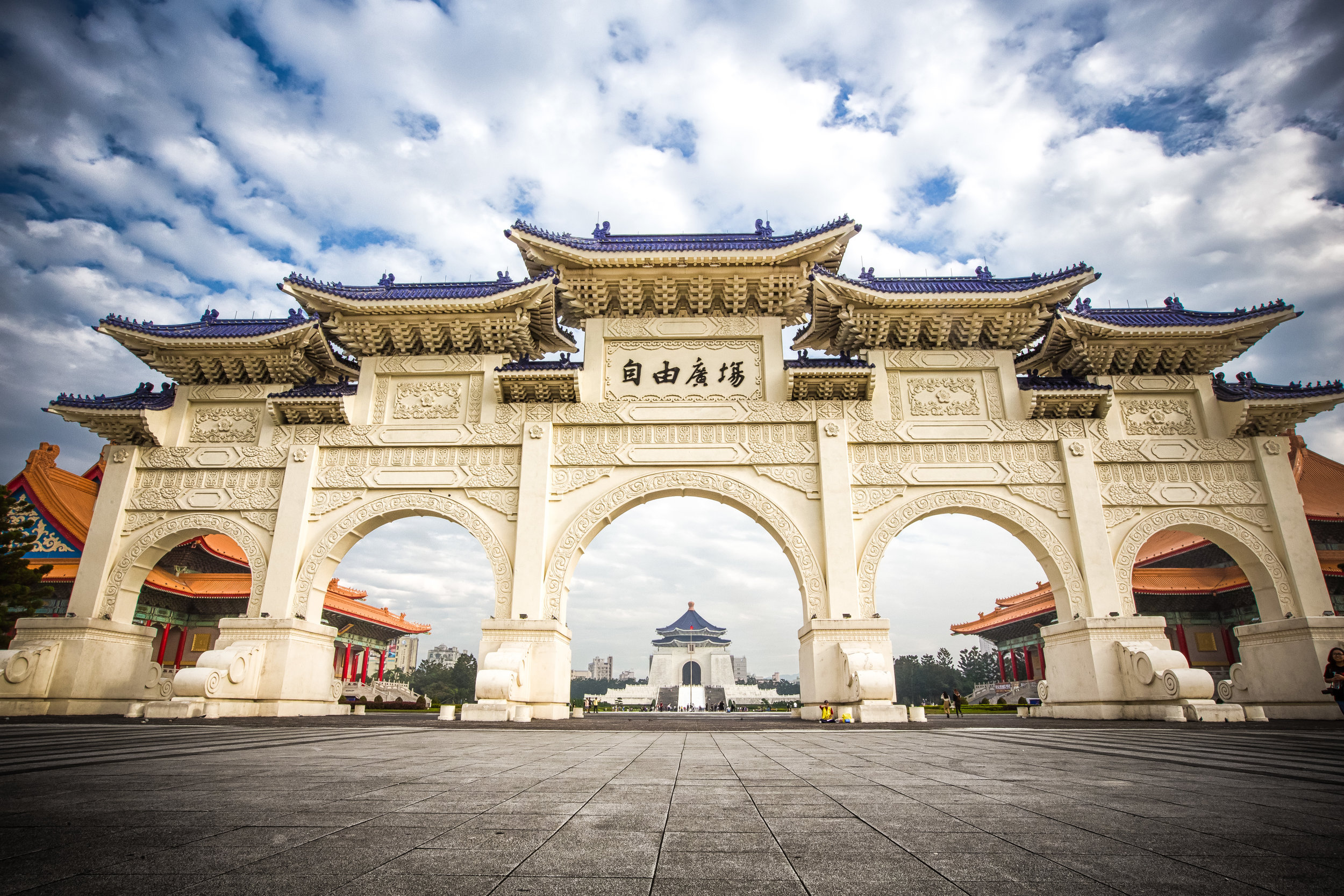The Chiang Kai-Shek Memorial Hall and the area surrounding it is one of the most prominent landmarks in Taiwan and is also one of the most popular destinations for tourists visiting Taipei with thousands of people showing up each day.
While the grandiose monument to former President Chiang Kai-Shek (蔣介石) is a popular tourist attraction, the Hall itself serves as a sore spot for the people of Taiwan who suffered under the leadership of President Chiang and the period of the martial law he imposed for almost four decades and the period of 'White Terror' he inflicted upon the citizens of Taiwan.
While I aim to describe this tourist landmark in the most positive light possible, I won't be glossing over the dark history and I hope that this blog post helps people to understand that the there is a very difficult and sad history that goes along with this memorial.
I hope that I can offer a balanced explanation of this beautiful landmark while also explaining the history of the park and Chiang Kai Shek's legacy in Taiwan.
History
President Chiang Kai-Shek died on April 5th, 1975 at the ripe old age of 89. The dying wish of the president was that his body be interned at his retreat in Daxi (大溪) until such a time that Republic of China forces could take back the mainland by force. The irony being that even in 1975, the reality of such a thing ever happening was an impossibility.
Due to Chiang's wishes to return to his homeland, his body was not prepared in traditional Chinese fashion and was thus placed in a black marble sarcophagus which was meant to preserve his body until it could be properly buried in his hometown in China. After lying in state for over forty years, it seems that Taiwan will ultimately be the final resting place of the former dictator.
Since his death, the people of Taiwan people have forged ahead with their own national identity and have pushed for reform while the party he and his family controlled for so long has lost favour with the people and has ultimately started to grovel at the feet of the Communist Party in China.
What Chiang was unable to foresee before his death was that Taiwan would develop into a thriving multi-party democracy. The peace-loving people in the country completely disregarded his dream of 'taking back' China from the Communists and forged ahead with mass development, transforming the tiny island of Taiwan into one of the most advanced nations in the world with a population that freely exercises its right to free speech and liberty.
Part of those changes (to put it simply) was to deal responsibly with Chiang's legacy and the horrendous crimes committed by his government against the Taiwanese people. Today, the people of Taiwan still don't have the full story of what happened during that era but Chiang's victims will ultimately have their stories told with the governments efforts to bring about transitional justice.
After Chiang's death, the government established a funeral committee that would be tasked with building a grand memorial to their ideological figurehead. A contest was held asking for submissions with a design by famed architect Yang Cho-Cheng (楊卓成) winning the rights to construct the memorial.
Yang Cho-Cheng was a master of Chinese-styled architecture with a career that spanned over six decades. Yang held favour with the KMT which in turn gave him the opportunity to design many of Taipei's landmark buildings which include Taipei's Grand Hotel (圓山大飯店), the National Palace Theatre and Concert Hall, the Shilin Official Residence (士林官邸), the Cihu Mausoleum (慈湖陵寢) and the Central Bank building (中央銀行) among others.
The groundbreaking ceremony for the Memorial Hall took place on October 31st, 1976 (coinciding with the 90th anniversary of Chiang's birth) and was officially opened a little over three years later on the fifth anniversary of Chiang's death.
The Memorial Park covers an area of over 240,000 square meters in Taipei's Zhengzheng District (中正區) which shares a home with the Presidential Palace (總統府) and most branches of the government and banks. Looking at the cramped city of Taipei today you might wonder how so much land was appropriated for the memorial park - The simple answer to that question is that the area where the park was built was once a military base during the Japanese Colonial era and was filled with squatters when the KMT retreated to Taiwan. The squatters were ultimately relocated and the land was re-zoned to make way for the park.
The expansive park consists of three large buildings: the Memorial Hall (中正紀念堂), The National Theatre (國家戲劇院) and the National Concert Hall (國家音樂廳). With the main archway, two side gates, Democracy Square (民主廣場), Democracy Boulevard (民主大道) and a beautiful forested park and walls along the perimeter.
In a move that would likely have Chiang turning in his grave, the Memorial Park constructed in his honour has since become the site of choice for many of Taiwan's modern mass protest movements. These mass movements which notably includes the Wild Lily Student Movement (野百合學運) whose efforts ultimately ushered Taiwan into its current democratic era and changed the political landscape of this country!
Today the Memorial Hall continues to be a popular venue for protest movements, but it has also become a popular tourist attraction and the site of carnival-like events. A visit to the park is a must on most tourists itineraries when they visit Taiwan as it shows off some of the best of Taiwan's architecture and traditional design.
Chiang Kai Shek Memorial Hall (中正紀念堂)
The grandiose Memorial Hall which sits at the back part of the Memorial Park is probably the main reason people visit the area. The three story hall is said to express the 'spirit of Chinese culture' and is built on strong foundations which symbolize "Zhong Zheng" (中正) which was Chiang Kai-Shek's adopted name and also means "impartial" and "righteous".
If you care to read more about the 'symbolic' nature of the Memorial Hall and the ways it (apparently) represents Chiang Kai Shek's character, check out the official site which goes into greater detail - Chiang Kai-Shek Memorial Hall Website.
The Memorial hall is white, has four sides and was constructed using Taiwanese marble. The roof is blue (representing the colour of his party and *cough* "freedom") and is in the shape of an octagon. In Asia, the number eight is an auspicious one that is associated with abundance and good fortune. The roof apparently is shaped in such a way though that each of the sides of the octagon forms the word for "people" (人) which was to symbolize that Chiang was a man of the people.
Leading up to the Memorial Hall there are two sets of stairs, each with 89 steps which represent each year of the dictators life. Between the staircases is a mural made of marble with the star of the Republic of China and the logo of the Kuomintang.
Most people don't actually realize that the ground entrance to the Memorial Hall, which is off to right side of the stairs is the entrance to an exhibition hall which documents important parts of Chiang's life and some of his accomplishments in Taiwan. There are also artifacts left by the former presidents estate which include his Cadillacs, uniforms, calligraphy, etc.
After walking up the stairs to the main entrance to the hall, you are met with an impressive doorway that brings you into the large shrine room where you'll come face to face with a large bronze statue of the man himself. Visitors are instructed to be quiet and respectful when entering the hall with guards walking around ensuring that nothing precarious happens.
Behind the statue the words "倫理" (ethics), "民主" (democracy) and "科學" (science) are inscribed on the wall in beautiful calligraphy. The words are taken from ROC founder Sun Yat Sen's (孫中山) "Minquan" or "People Power Principle" (民權主義) and part of the larger philosophy that made up his "Three Principles of the People“ (民權主義) governing philosophy.
Each side of the statue has members of the Republic of China Honour Guard who stand at attention and take part in an elaborate changing of the guard ceremony once every hour and a lowering of the flag ceremony at 5:00pm each day. The changing of the guard ceremony is one of the most popular attractions at the Memorial Hall and when its time for the changing of the guards, an elaborate ceremony takes place which is symbolic of the ROC armed forces discipline and skill.
Liberty Square / Renaming Controversy
In the year 2000, after more than fifty years of single party rule, the Chinese Nationalist Party was defeated in free and open elections by former President Chen Shui Bian (陳水扁) and his Democratic Progressive Party. In the years since Chiang Kai-Shek's death, Taiwan had transformed itself into a pluralistic democracy with protected rights for all of its citizens with efforts to seek transitional justice for the people who suffered under one party rule.
The newfound rights and freedoms granted to the people of Taiwan meant that a serious debate could take place as to Chiang Kai-Shek's legacy with more and more details emerging as to what really happened during as a result of the 228 Incident (二二八事件) and the period of White Terror (白色恐怖) orchestrated by the KMT under what is known as the longest period of Martial Law in world history.
In 2007 controversy erupted when the Chiang Kai-Shek Memorial Hall was renamed by the government to the Taiwan Democracy Memorial Hall (台灣民主紀念館). The move was a lacklustre and short-lived attempt to right the wrongs of the past with the claim that the name change reflected the desire of the Taiwanese public to "bid goodbye to the old age and to show that we Taiwanese are all standing firmly behind the universal values of freedom, democracy and human rights."
The changes to the Memorial Park included:
- The removal of the "Chiang Kai-Shek Memorial Hall" plaque.
- Adding the "Taiwan Democracy Memorial Hall" (台灣民主紀念館) plaque.
- The removal of the ceremonial ROC Honour Guards who stand at attention.
- A redesign of the inner hall to honour Taiwan's road to democracy.
- The naming of the square in front of the hall to "Liberty Square" (自由廣場).
- The naming of the walkway leading up to the Hall to "Democracy Boulevard" (民主大道).
- Replacing the words "Great Centrality and Perfect Uprightness" (大中至正) from the main gate with "Liberty Square" (自由廣場).
Unfortunately the Taiwan Democracy Memorial Hall was an exercise in futility as the changes came close to the end of President Chen's second term and the KMT presidential candidate Ma Ying-Jeou (馬英九) promised an immediate removal of all of the changes made to the memorial hall.
"Mr. Ma" ultimately won the election and the Chiang Kai-Shek Memorial Hall was restored shortly thereafter.
If you'd like to read a more detailed explanation of the Renaming Controversy check out this excellent Wikipedia post about it which is one of the best English recollections of the events available on the internet - Renaming of Chiang Kai-Shek Memorial Hall
Despite Mr. Ma's campaign promises to remove all of the changes to the Memorial Hall, the government was unable to remove the Liberty Square and Democracy Boulevard changes as it would have been seen as a regression in Taiwan's democracy and yet another KMT denial of their crimes against the people of Taiwan.
Today, the beautifully designed main gate to the Memorial Hall is named "Liberty Square" and it is a fitting name for a place that has been a hot spot for democratic activity and protest since Chiang's death in 1975.
Liberty Square is a popular place not only for mass gatherings and protests but for outdoor concerts, festivals and public exhibitions. The square has also become a popular place for students to practice dance routines as well as for others to exercise, practice Tai Chi, bird-watch and relax with friends.
National Theatre and Concert Hall
The most imposing and impressive structures on Liberty Square are that of the National Theatre (國家戲劇院) and National Concert Hall (國家音樂廳). The two buildings play host to major performances all year long and are considered the best artistic venues in the country.
The two opposing buildings which were completed in 1987 have since become major Taipei landmarks and are celebrated not just for the quality performances that take place throughout the year but also for the traditional Chinese palace-style design and modern construction techniques that were used in their construction.
Each of the buildings house art galleries, shops, restaurants and libraries dedicated to the performing arts and tours are available if you'd like to visit the interior.
The people of Taiwan people are extremely well-skilled when it comes to the art of designing beautiful landscapes and the gardens. The skill, care and design that goes into designing even small floral arrangements in Taiwan is extremely admirable. The groundskeepers at the Chiang Kai-Shek Memorial Hall however take landscape design to a whole new level with well-curated pieces of landscaping art to each side of Democracy Boulevard.
The forested parks to the side and behind the Memorial Hall are also quite impressive. The parks are a haven for wildlife serving as the home for squirrels, birds, fish, turtles and cranes. Local people come to the park to exercise as well as feed the wildlife.
The parks, like the floral designs next to Democracy Boulevard are artificial, but after almost thirty years of existence they seem almost natural. The trees have grown quite large and a stroll through the forest walkways is a peaceful escape from the city.
Each side of the park has a 3000 square meter pond which are named "Yunhan Pond" (雲漢池) and "Guang Hua Pond" (光華池) respectively. The ponds are home to turtles, frogs, King Fishers and a variety of carp.
As one of the top travel destinations in Taiwan, the Chiang Kai-Shek Memorial Hall and park should definitely be considered a must visit stop for any traveller visiting Taiwan.
Chiang made a point even in death to show that his "China" was the better one and that traditional Chinese culture and architecture had a place in modern Taiwanese society while the Communists in China were wreaking havoc and destroying remnants of the past.
The architectural design put on display in this park is amazing and the sheer size of it makes it awe-inspiring for anyone who enjoys a bit of traditional design with a modern touch.
While a trip to the Memorial Park is highly recommended by most travel guides, I also recommend taking some time to educate yourself about the complicated history of the man who was an important figure during the Second World War and whose oppression and authoritarian style of governance for better or worse shaped Taiwan into the modern country it is today. Below are some links that will help:
- 228 Memorial Foundation | 二二八紀念館
- The 228 Incident and Taiwan's Transitional Justice
- 228 Incident (Wikipedia) | 二二八事件
- White Terror (Wikipedia) | 臺灣白色恐怖時期
- Formosa Betrayed (Online Book)
- Why Demand Transitional Justice? (New Bloom)
- Duty of 228 (Video)
- The History of Taiwan: Postwar Era and The 228 Incident (Video Series)
- Taiwan Bar - The 228 Incident (Video)
Gallery / Flickr (High Res Photos)
